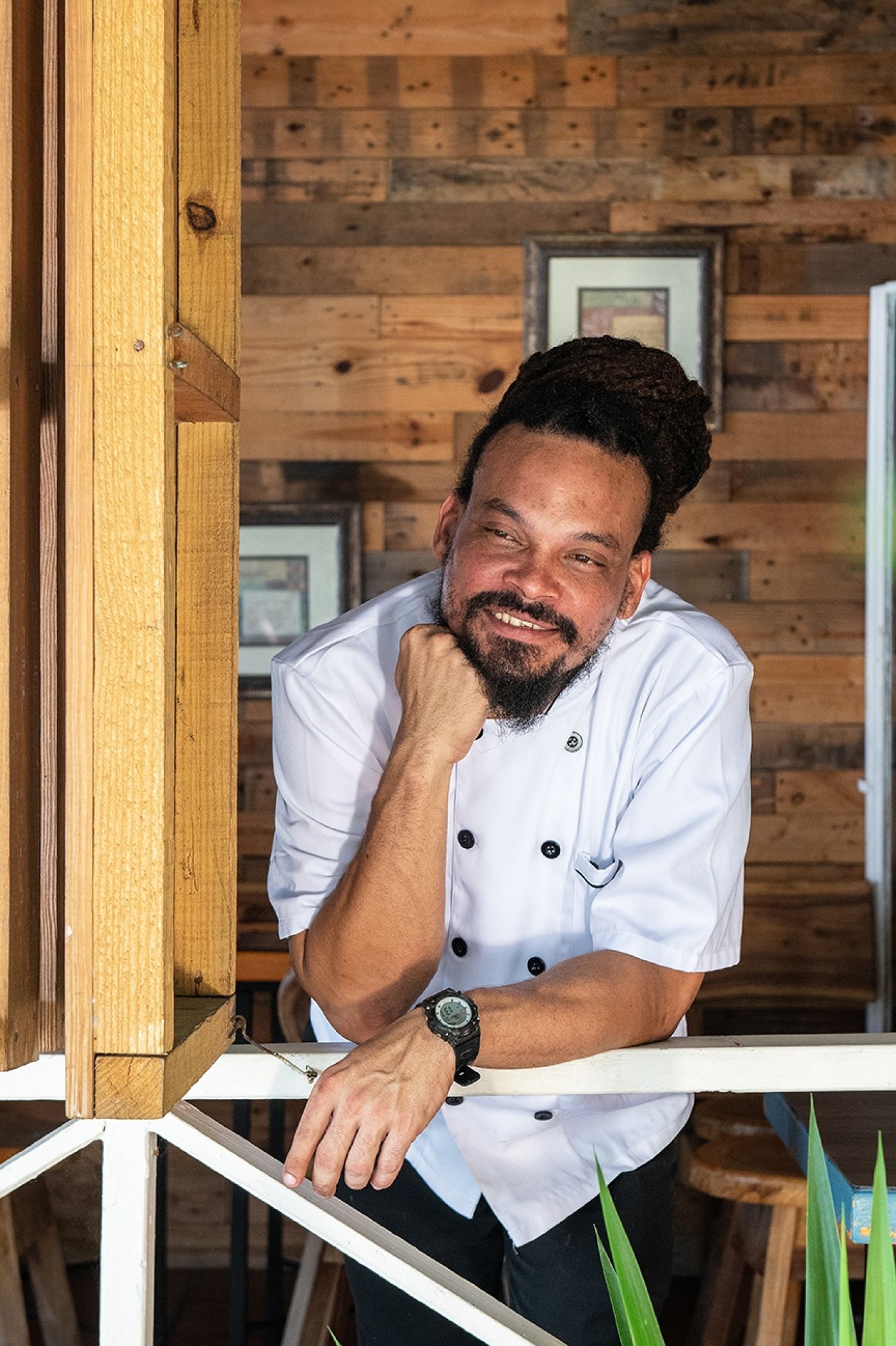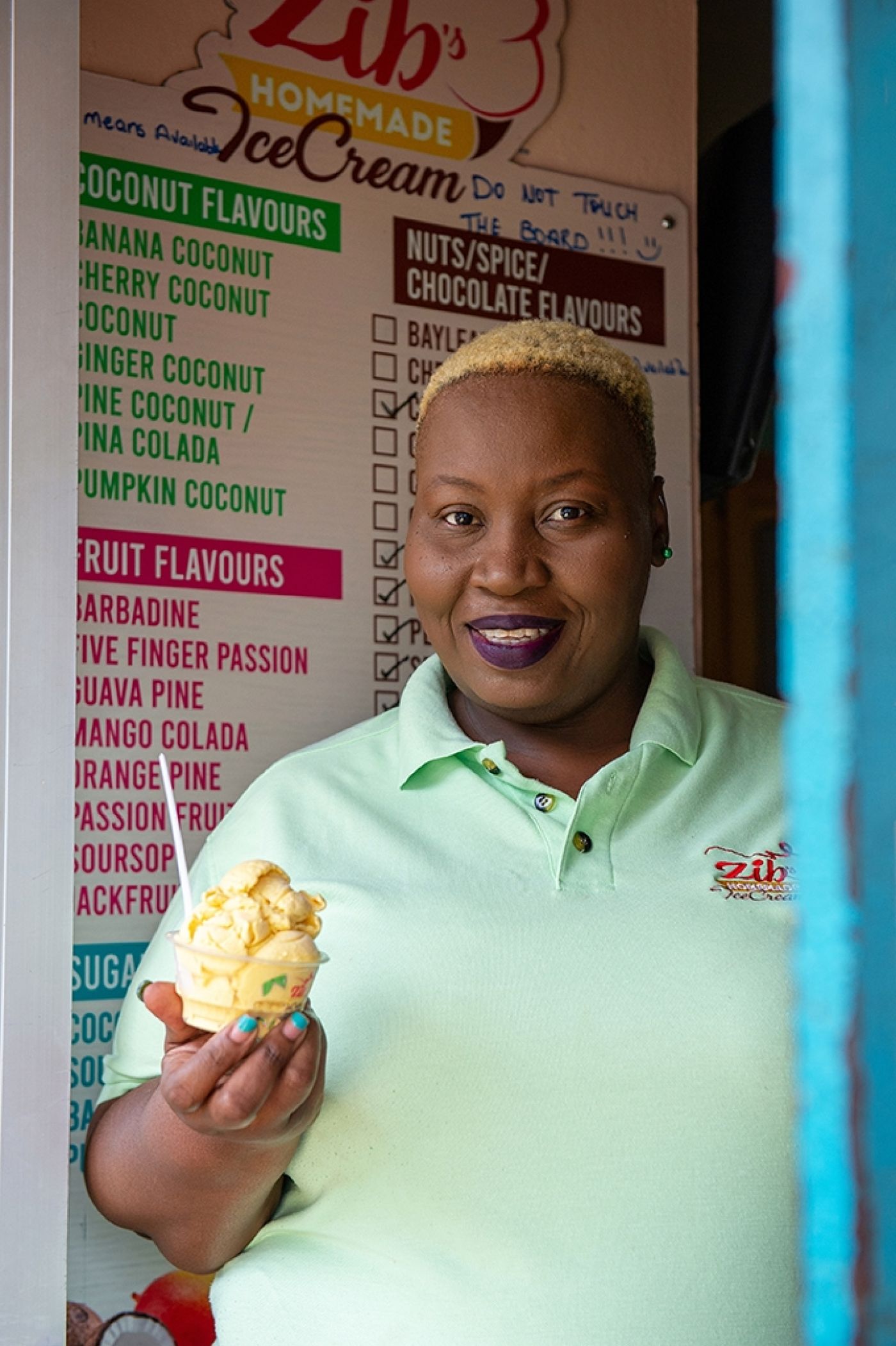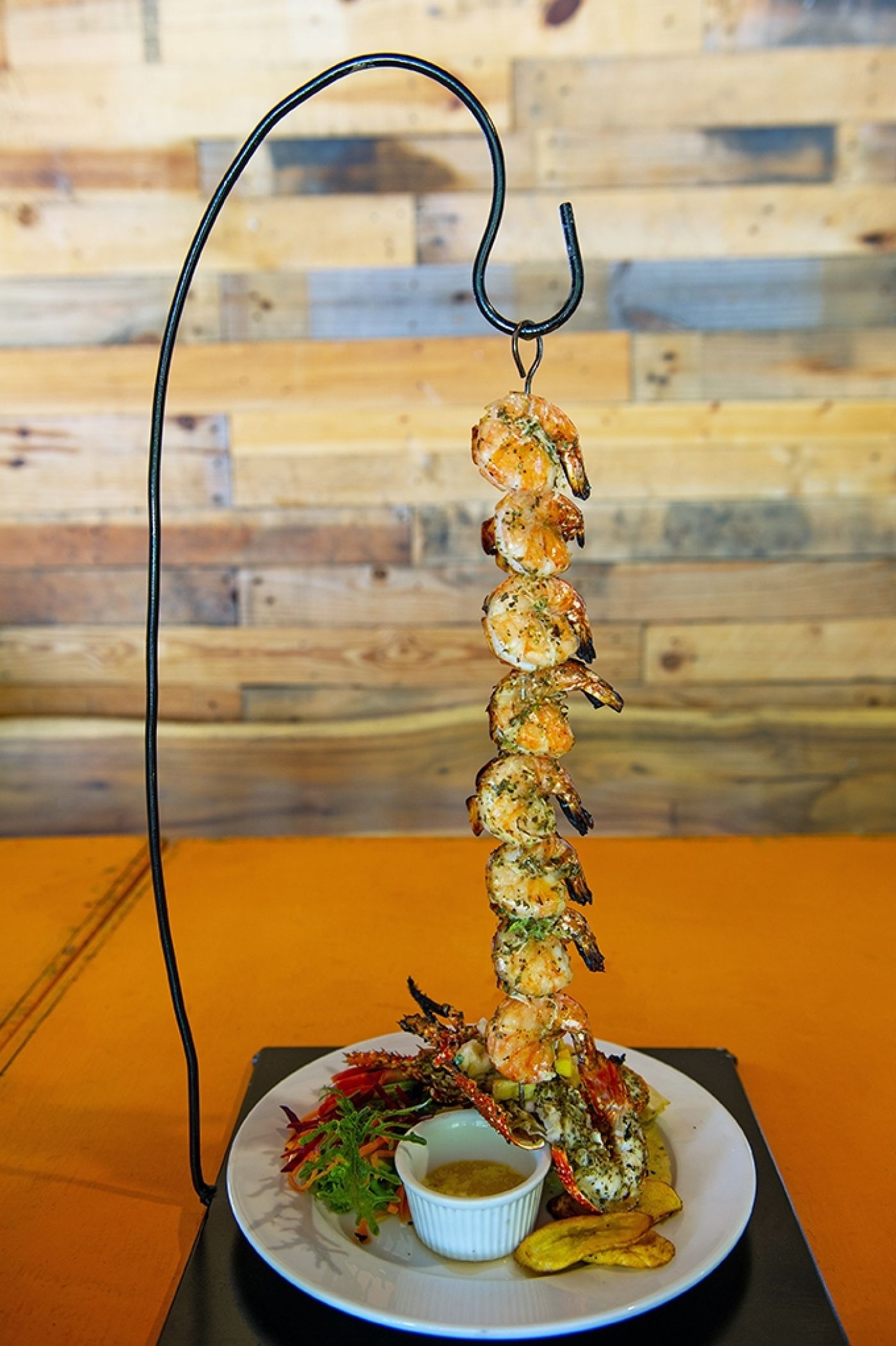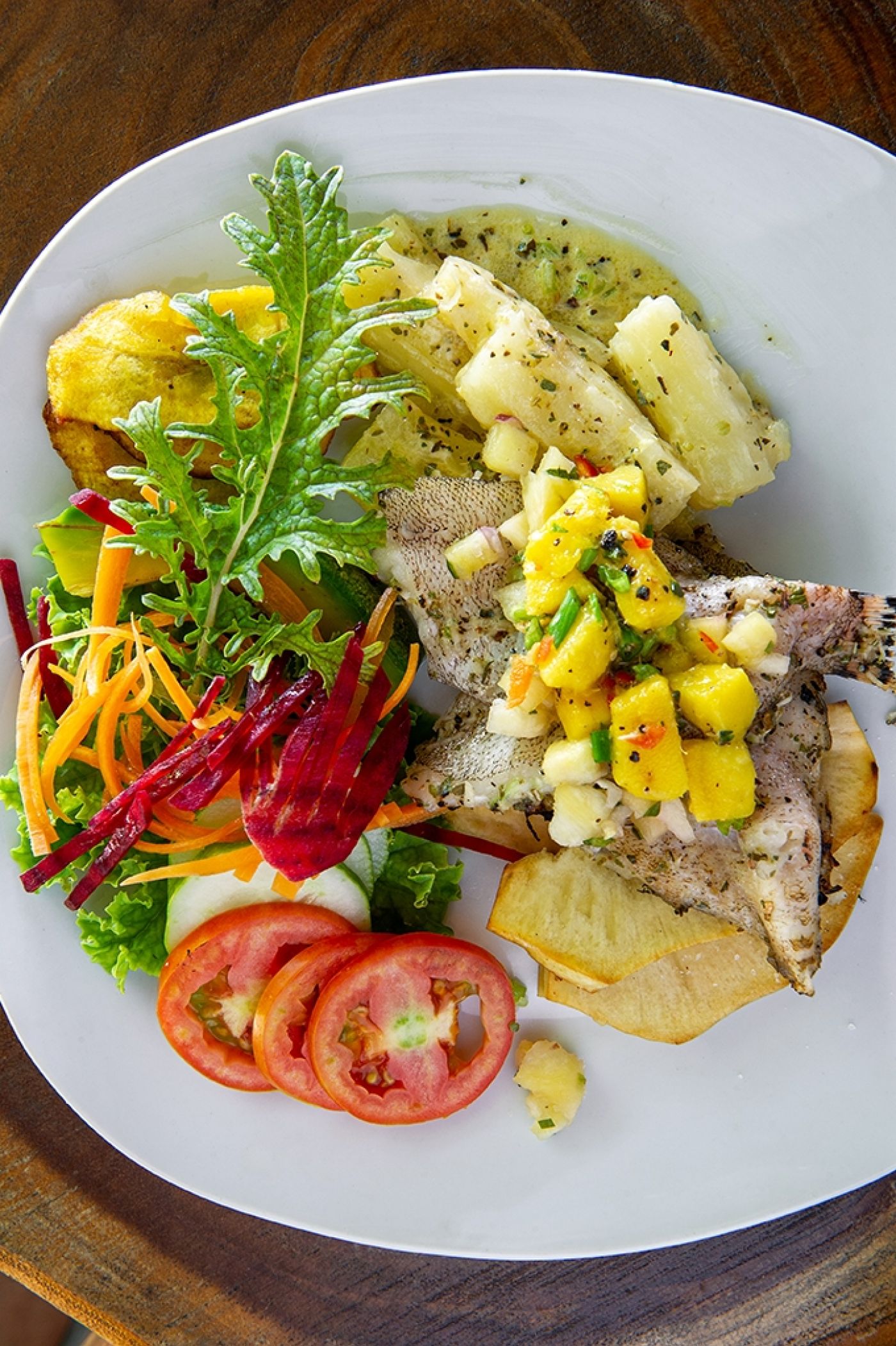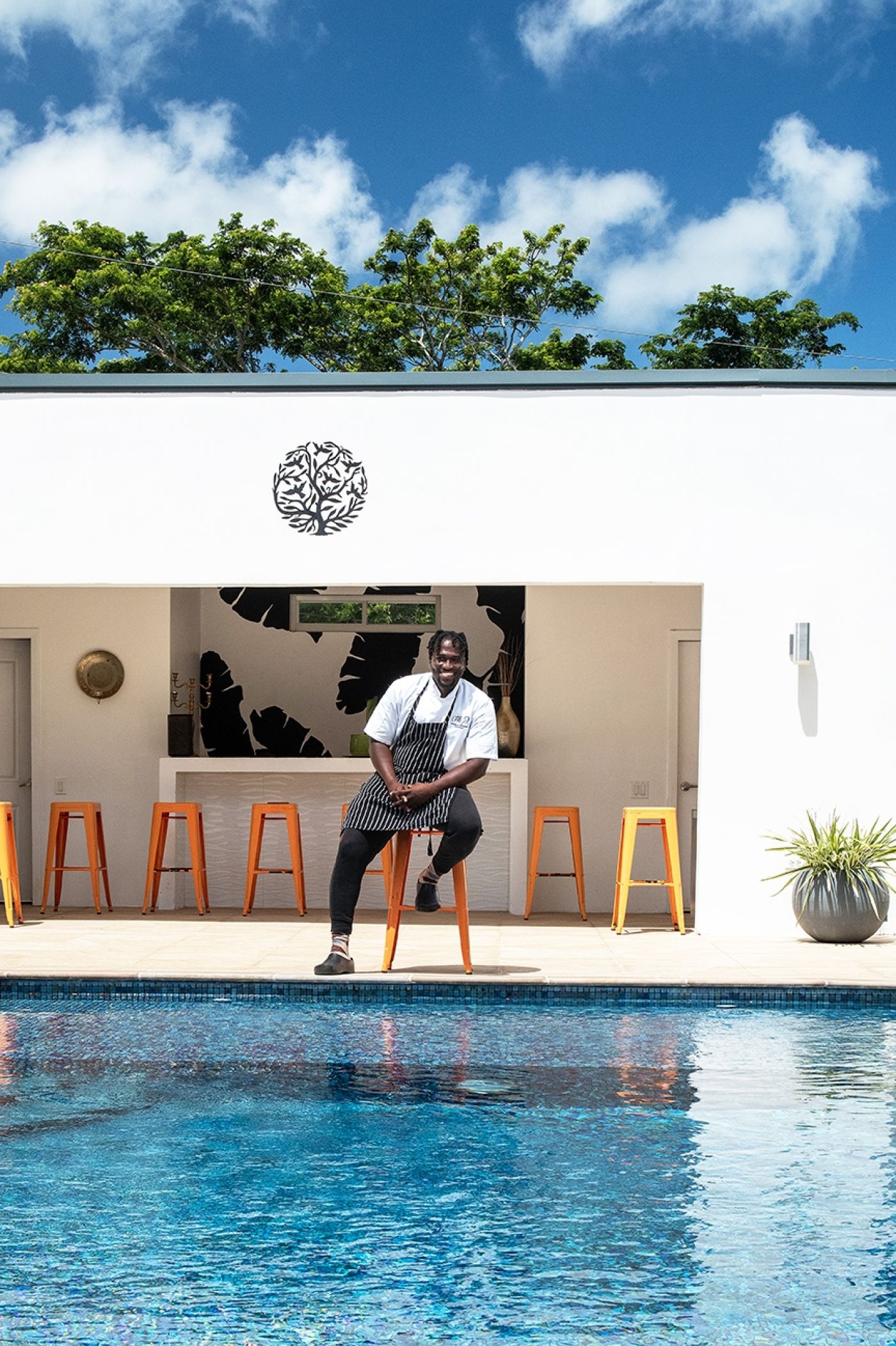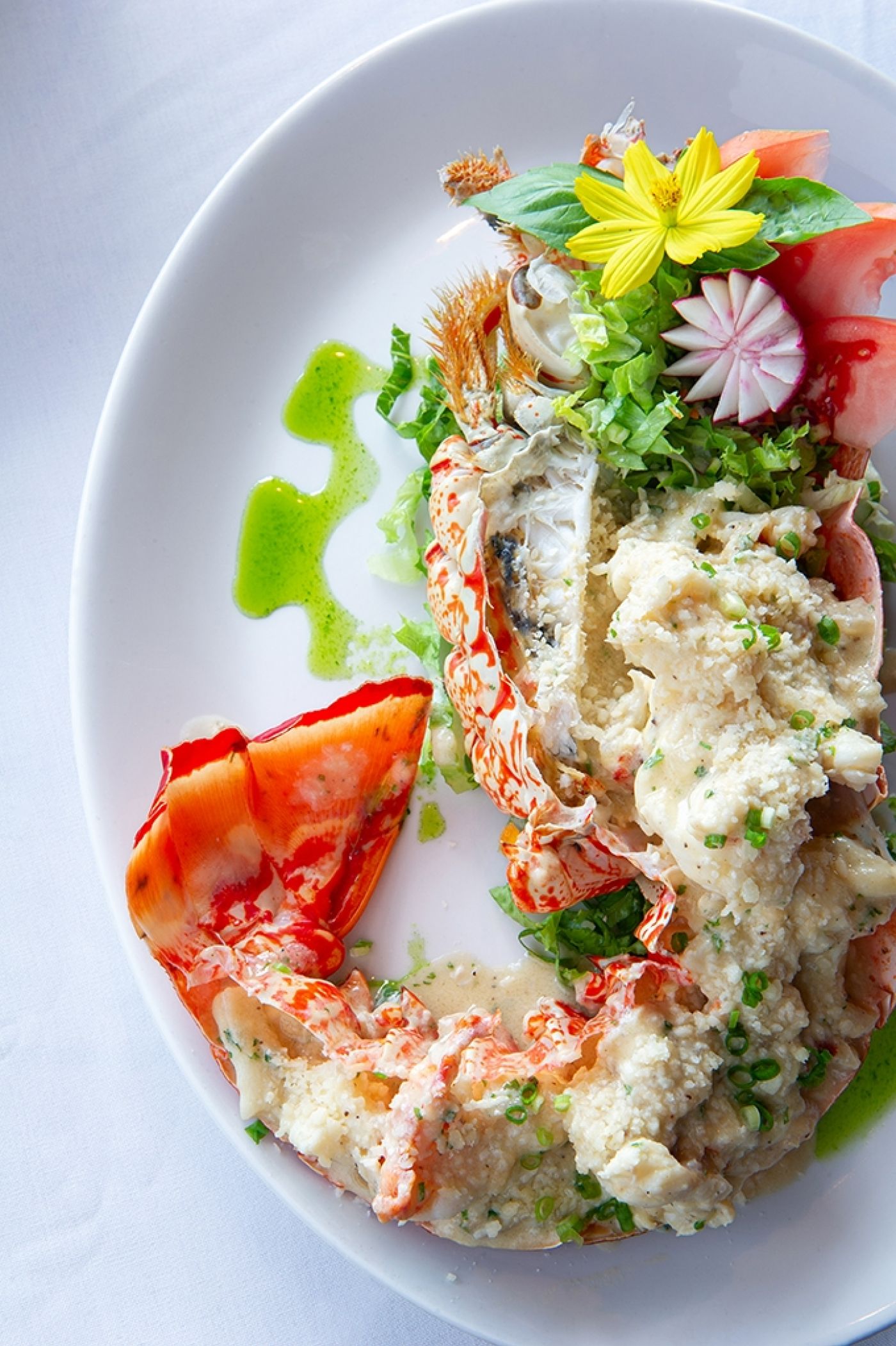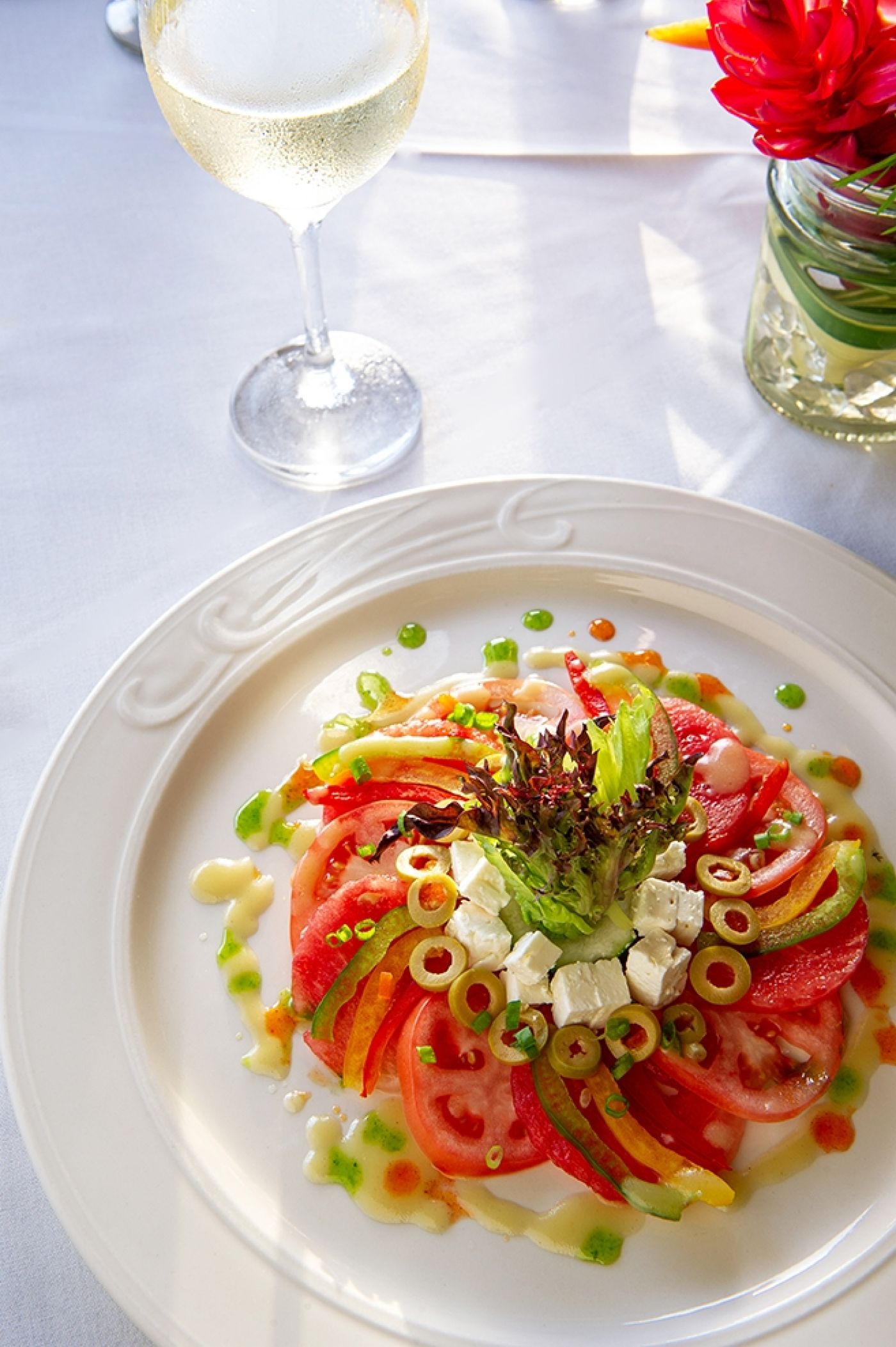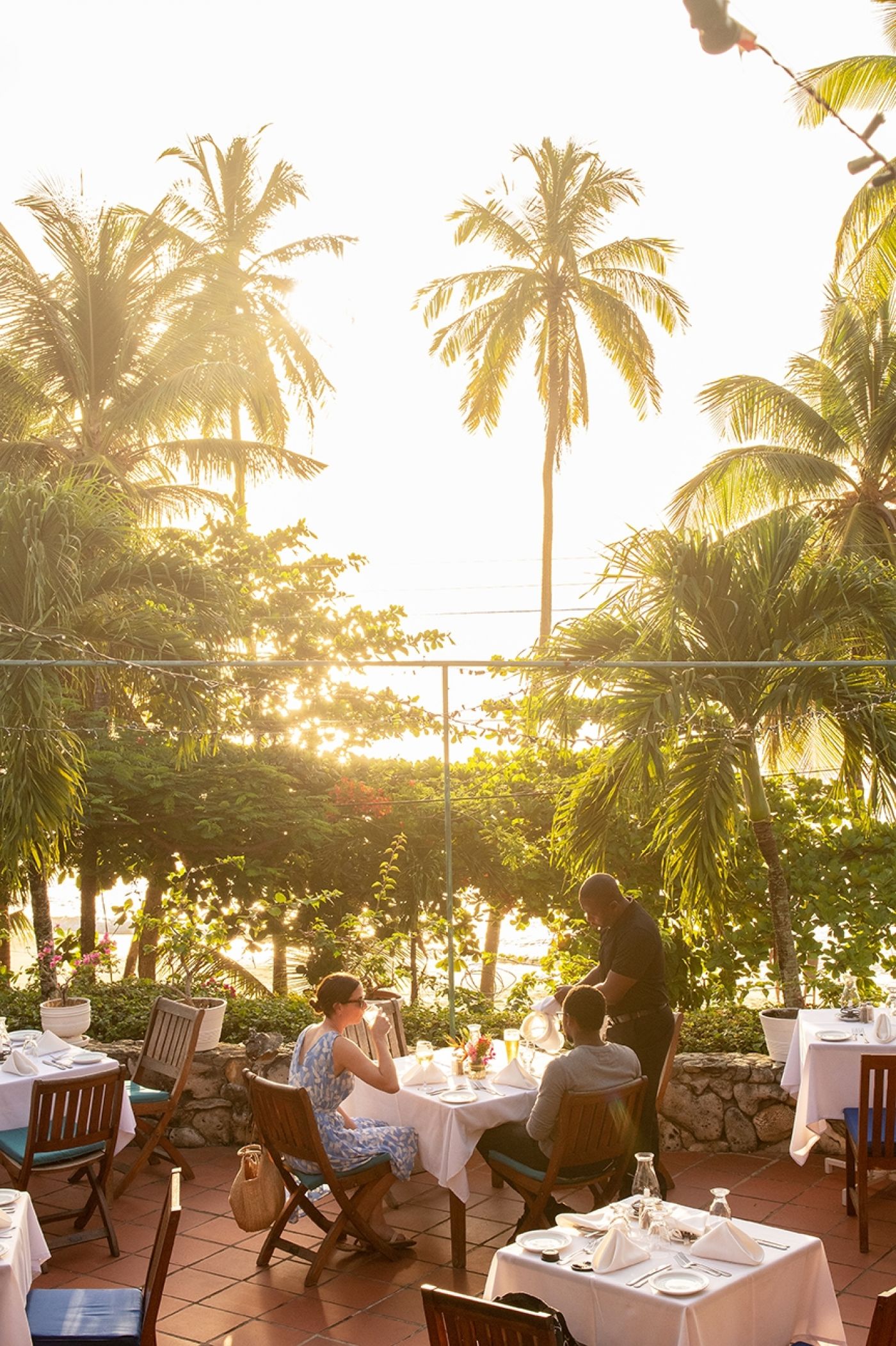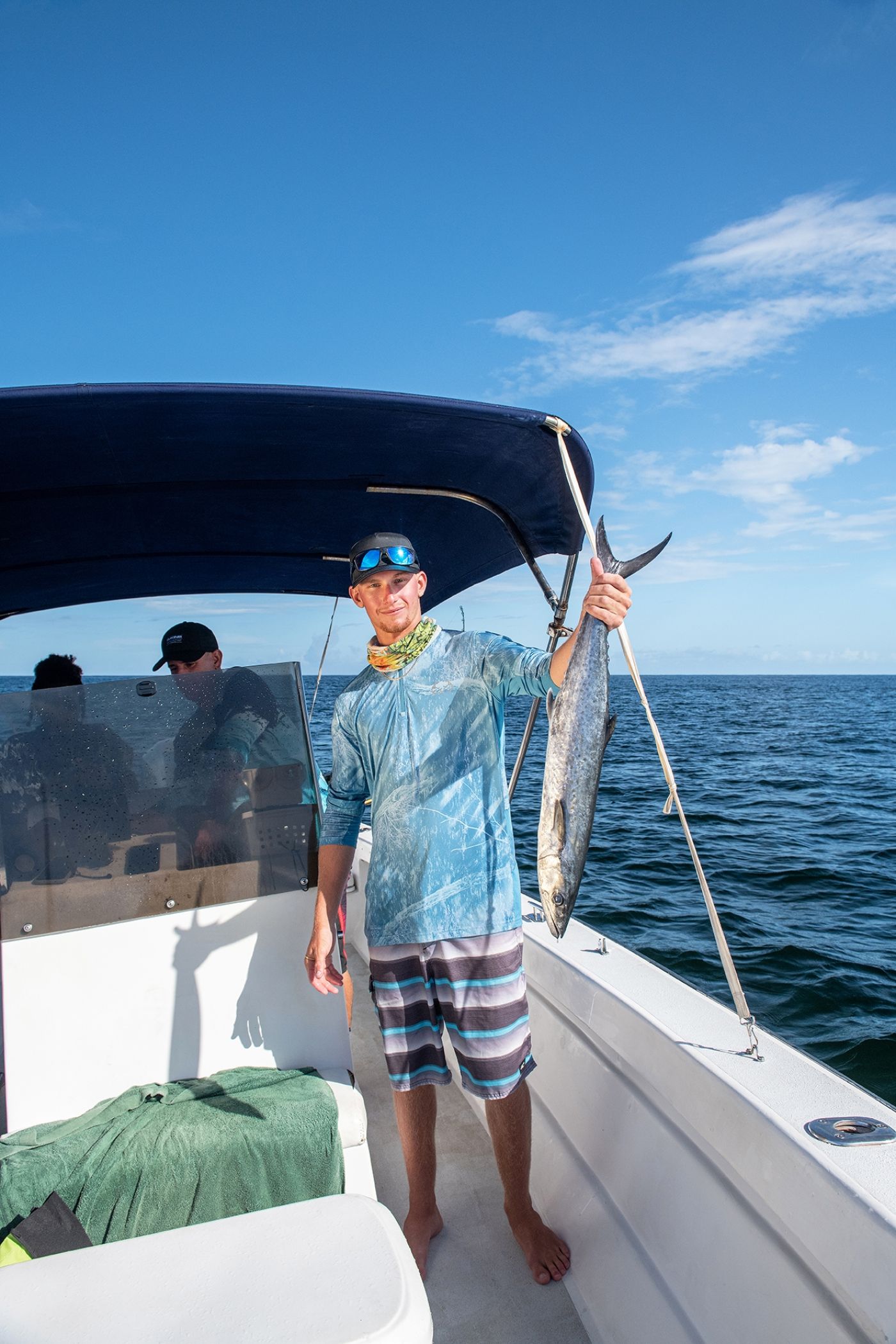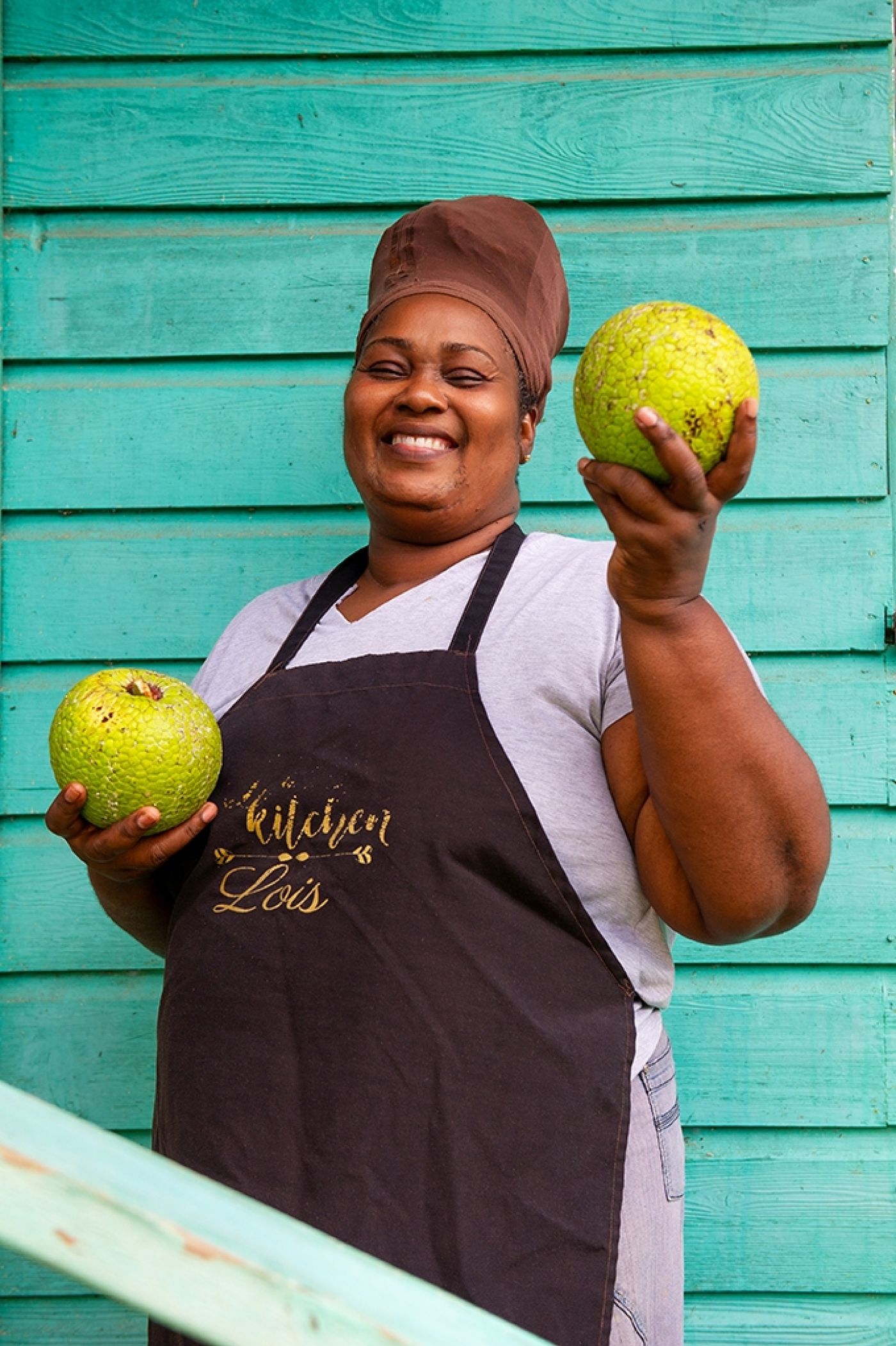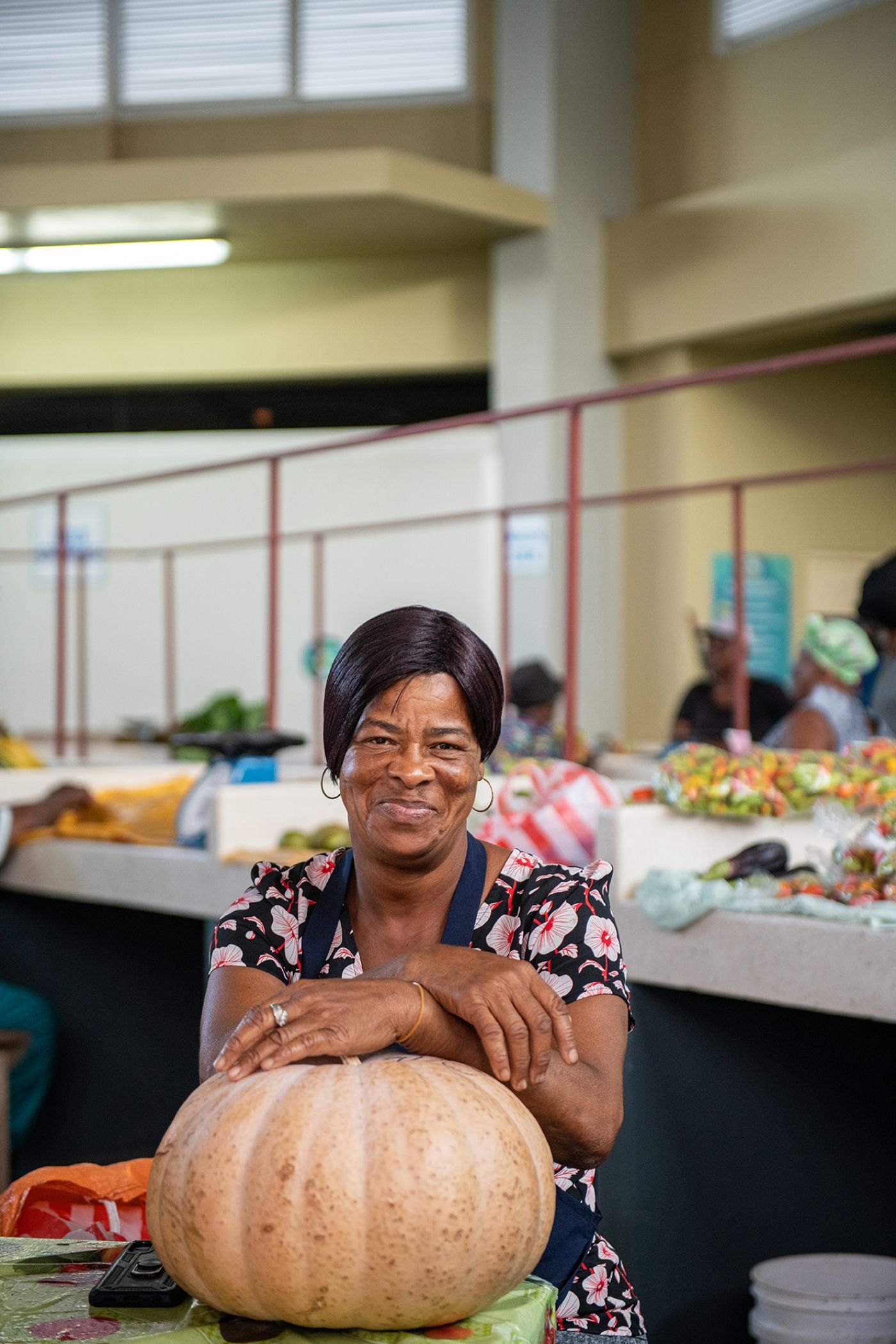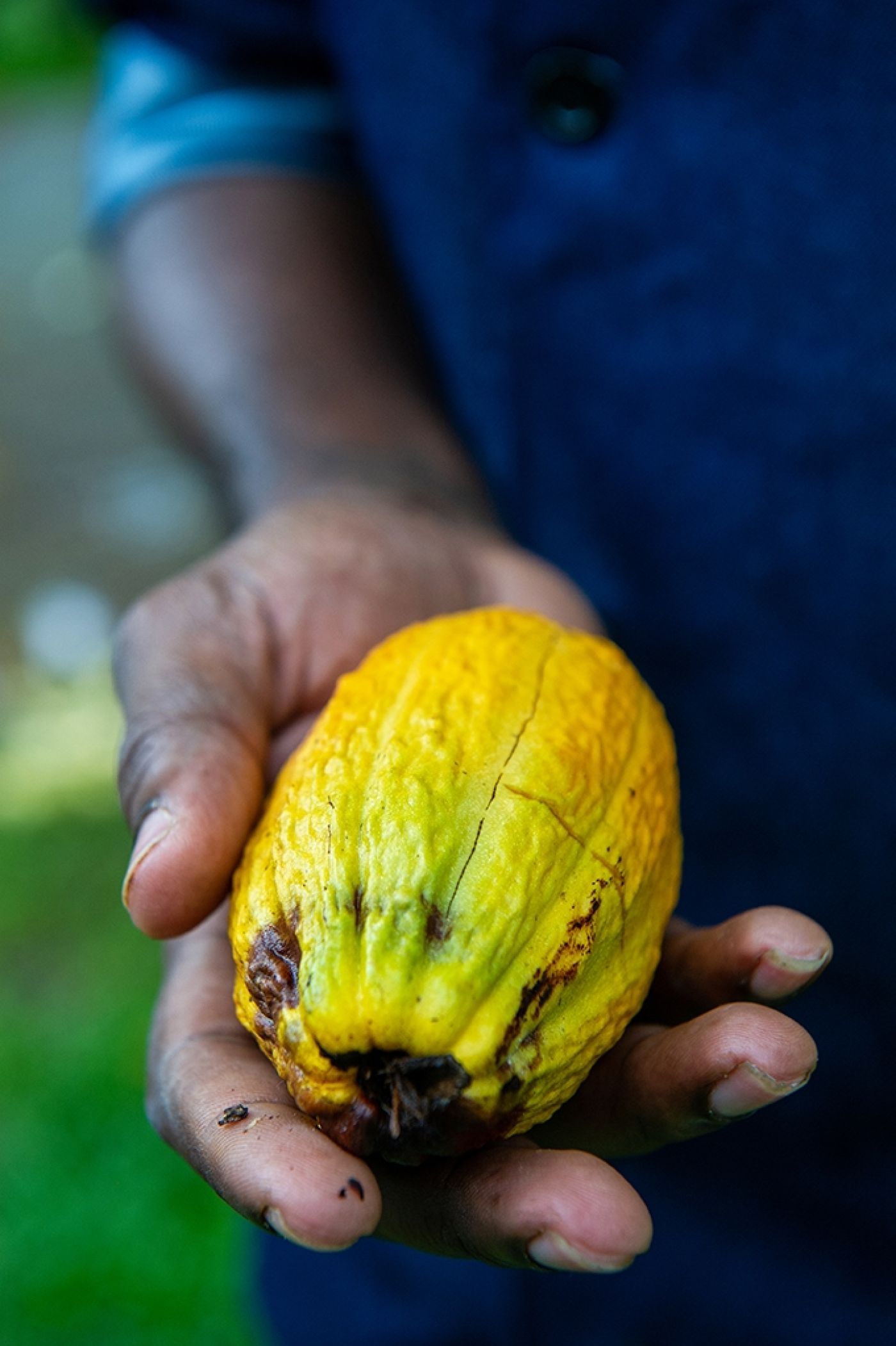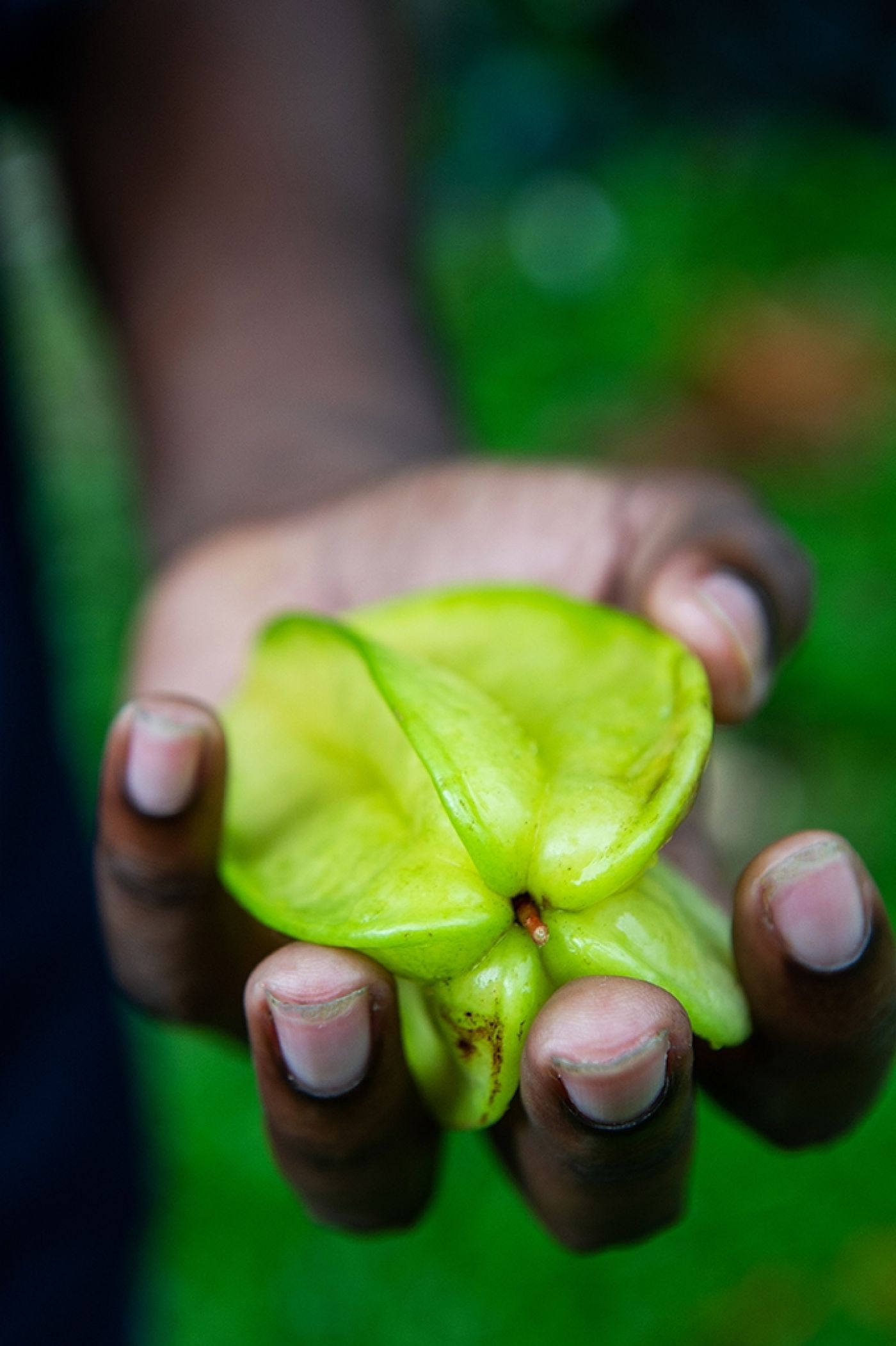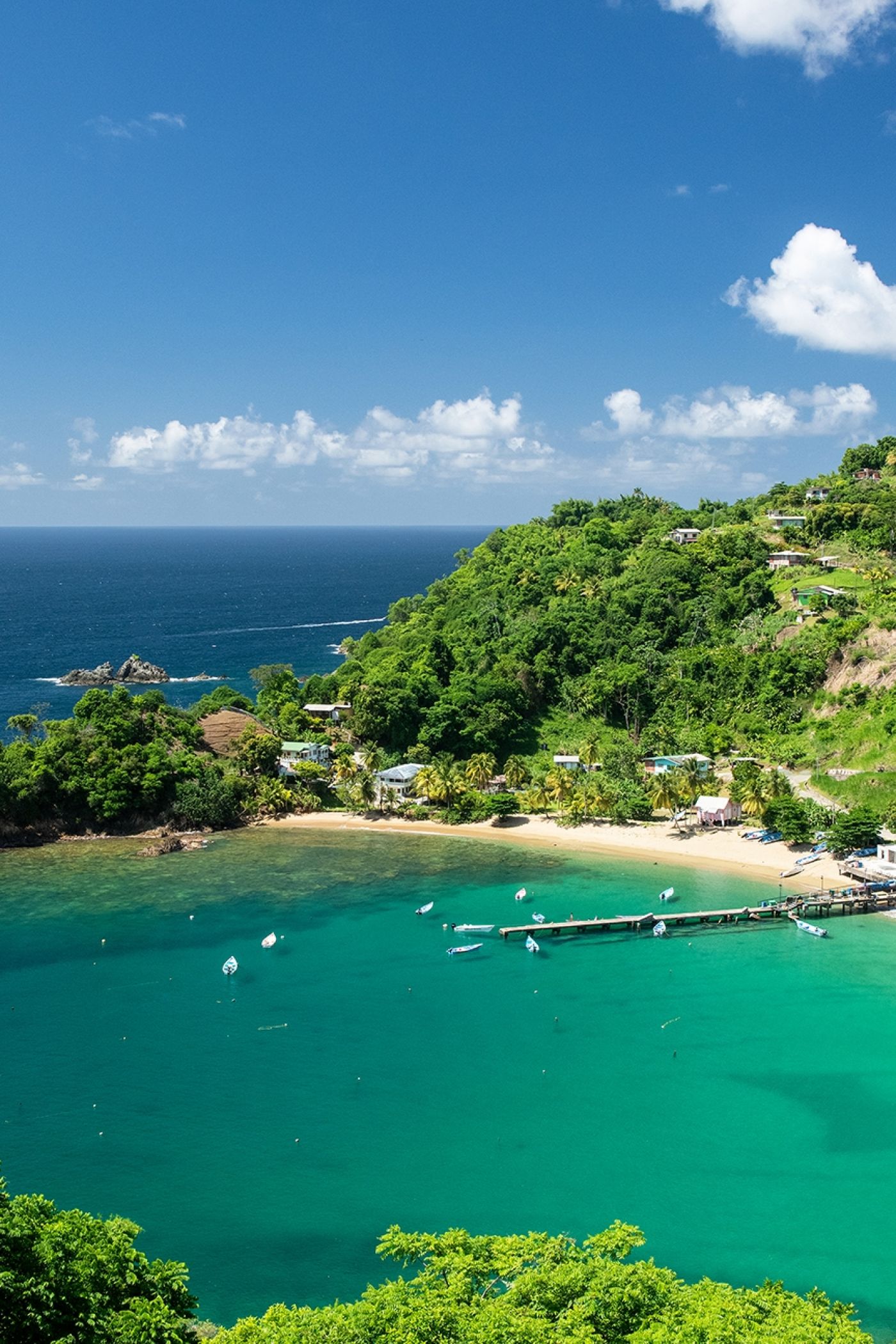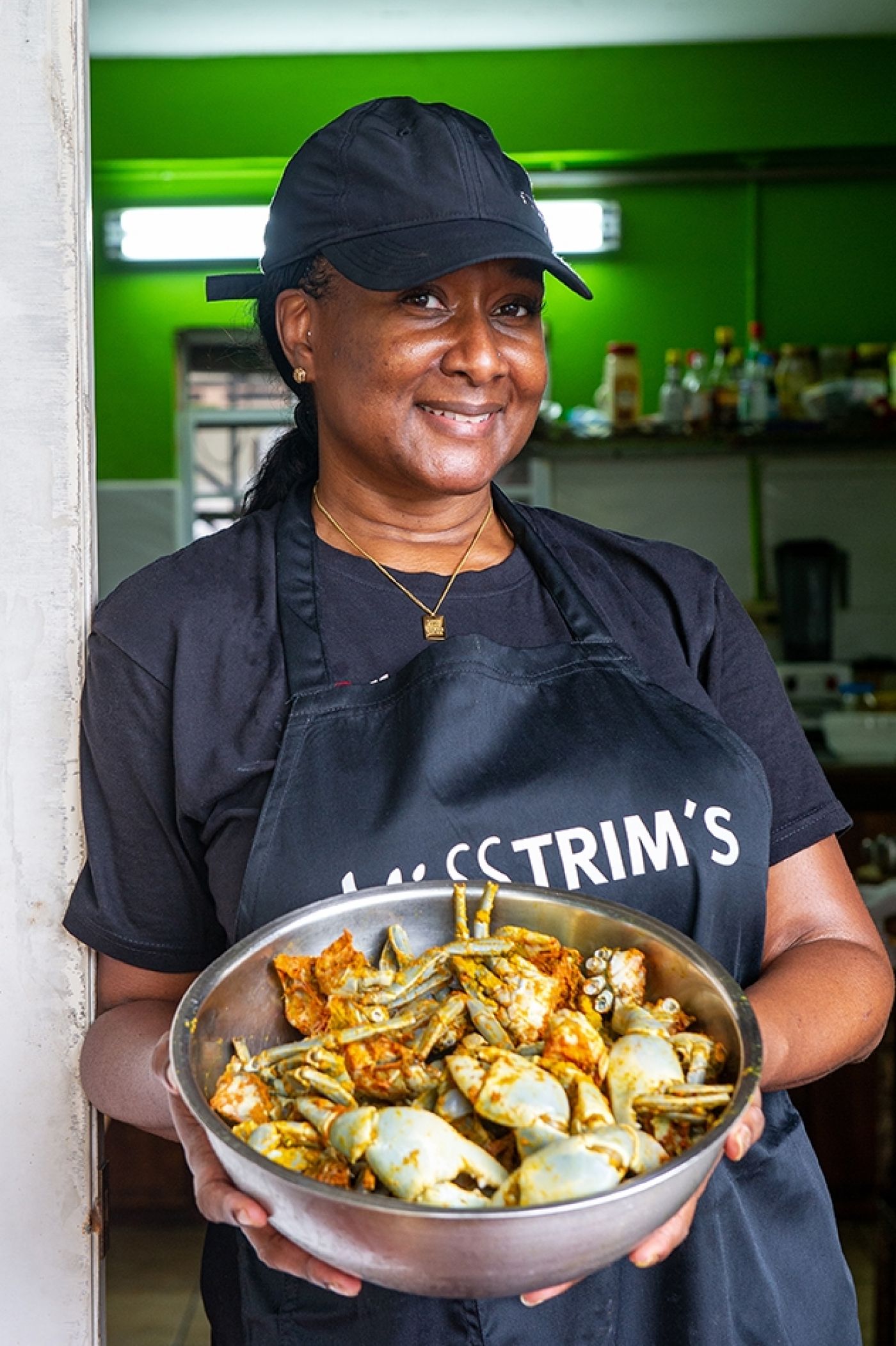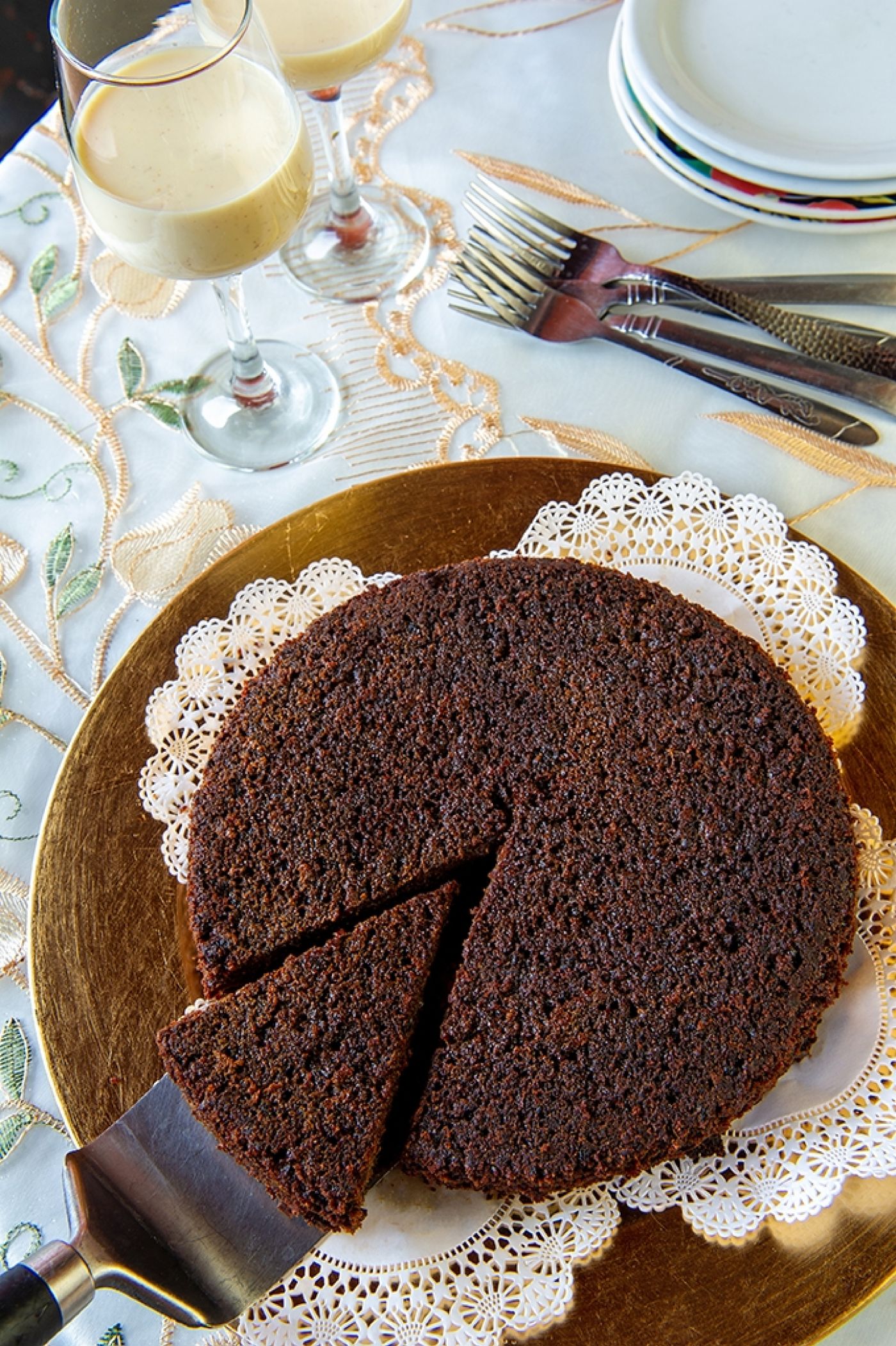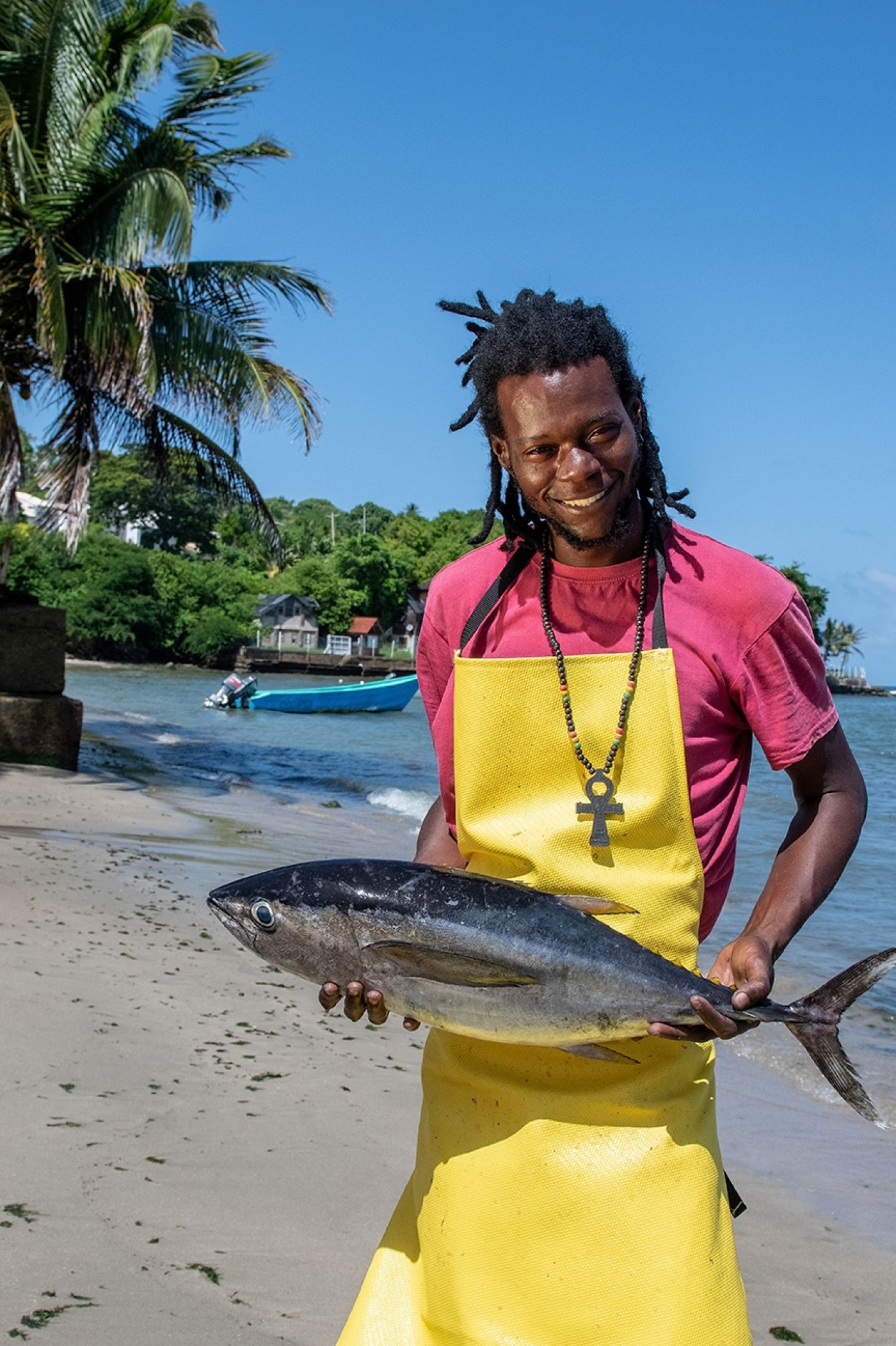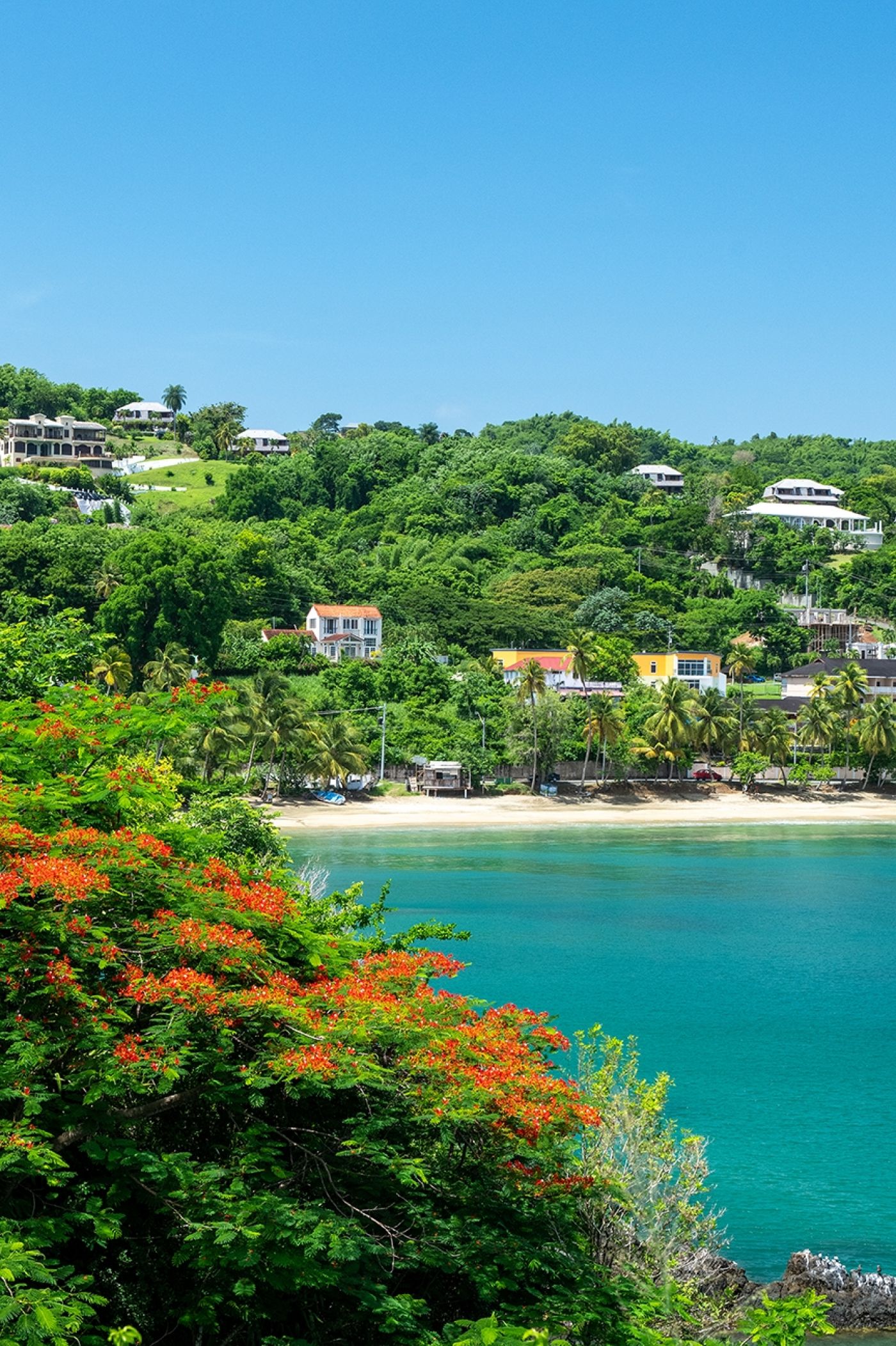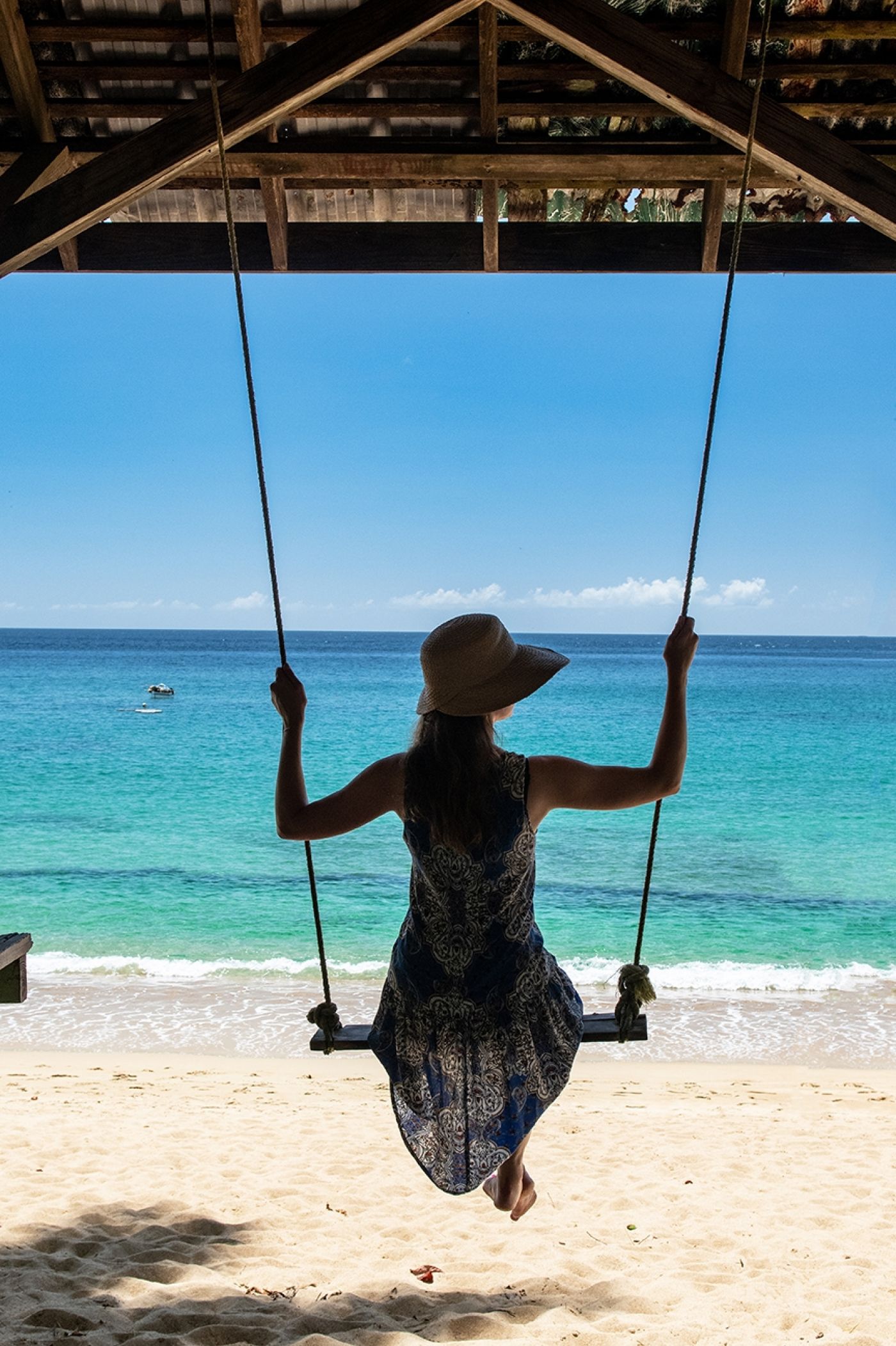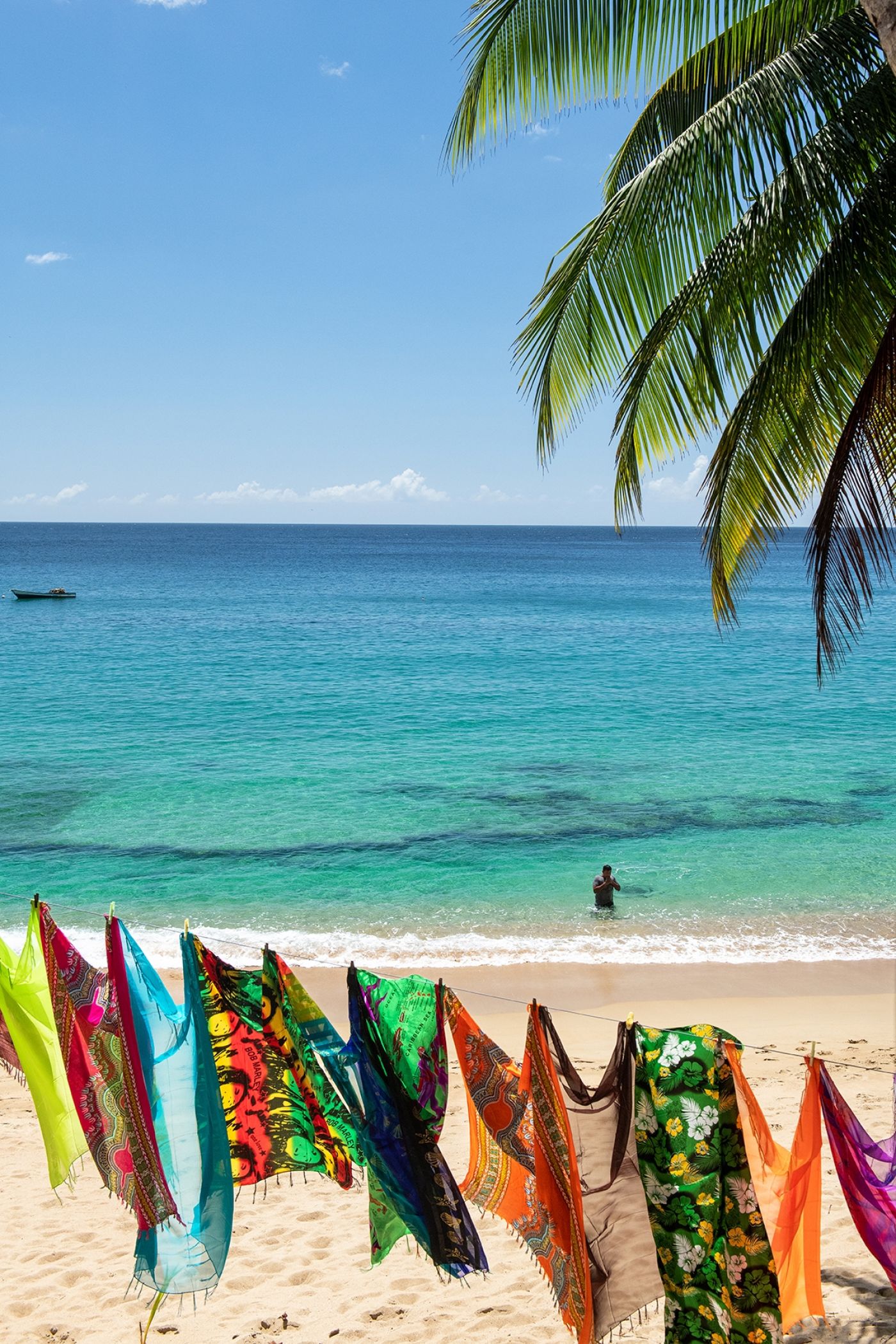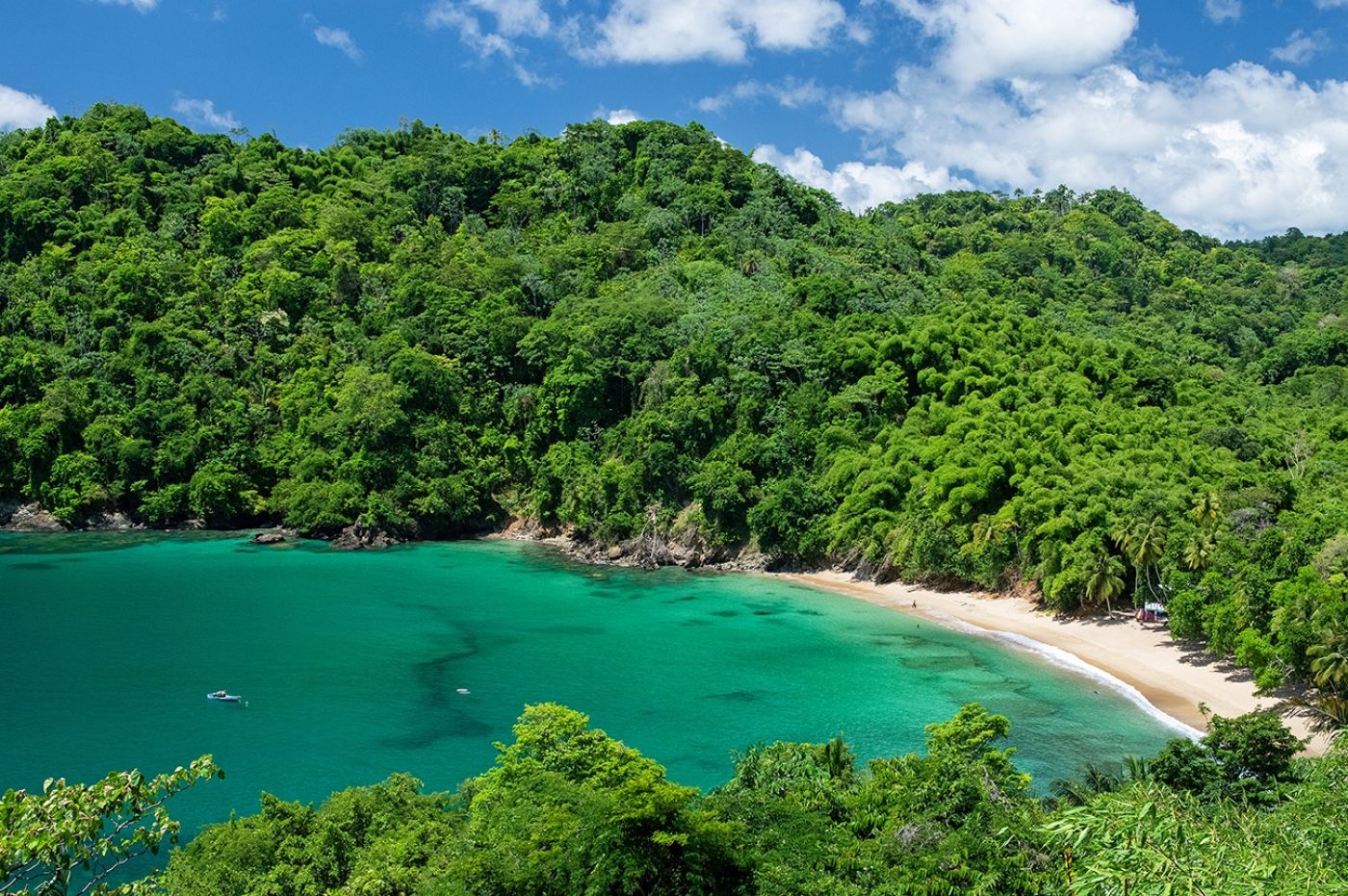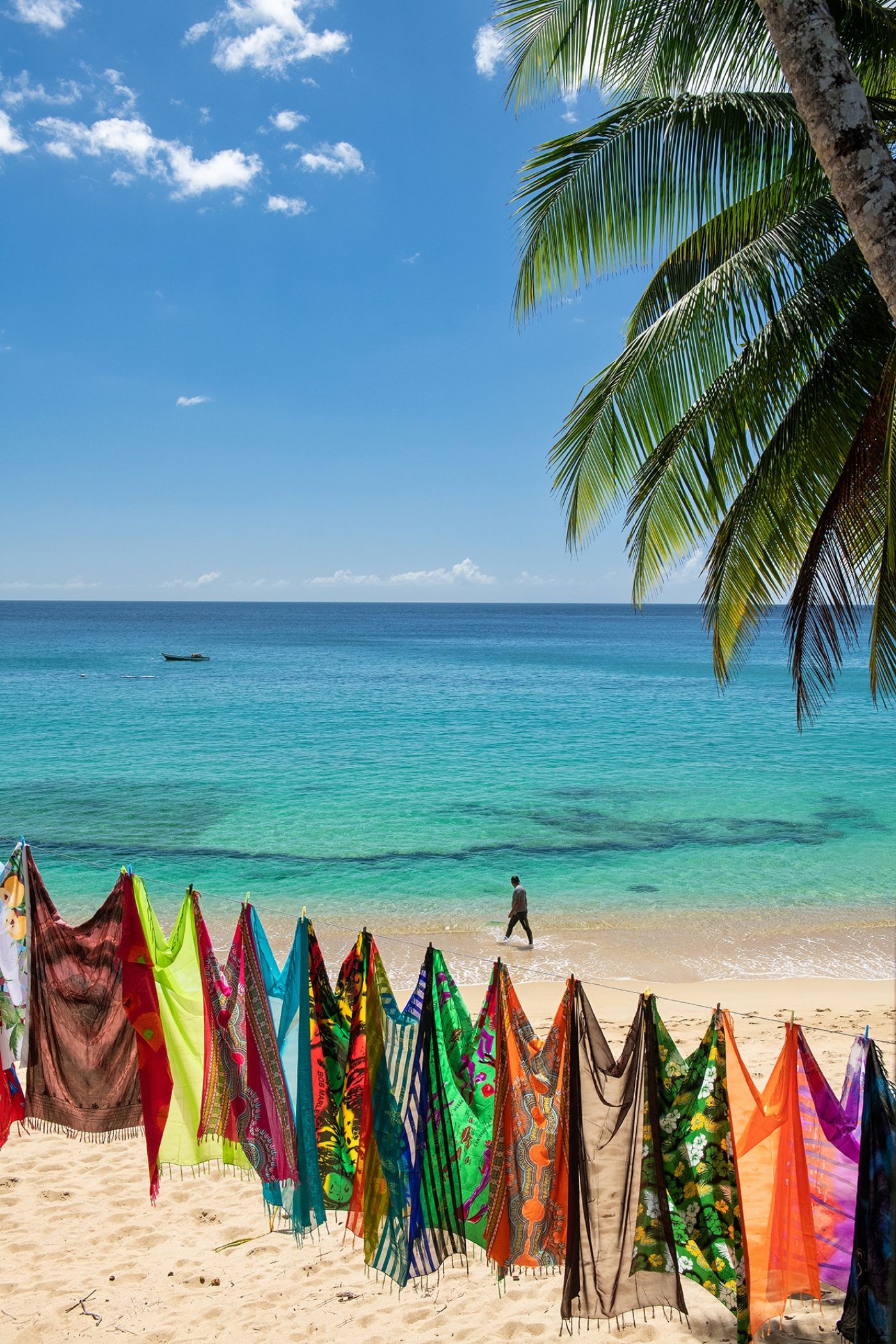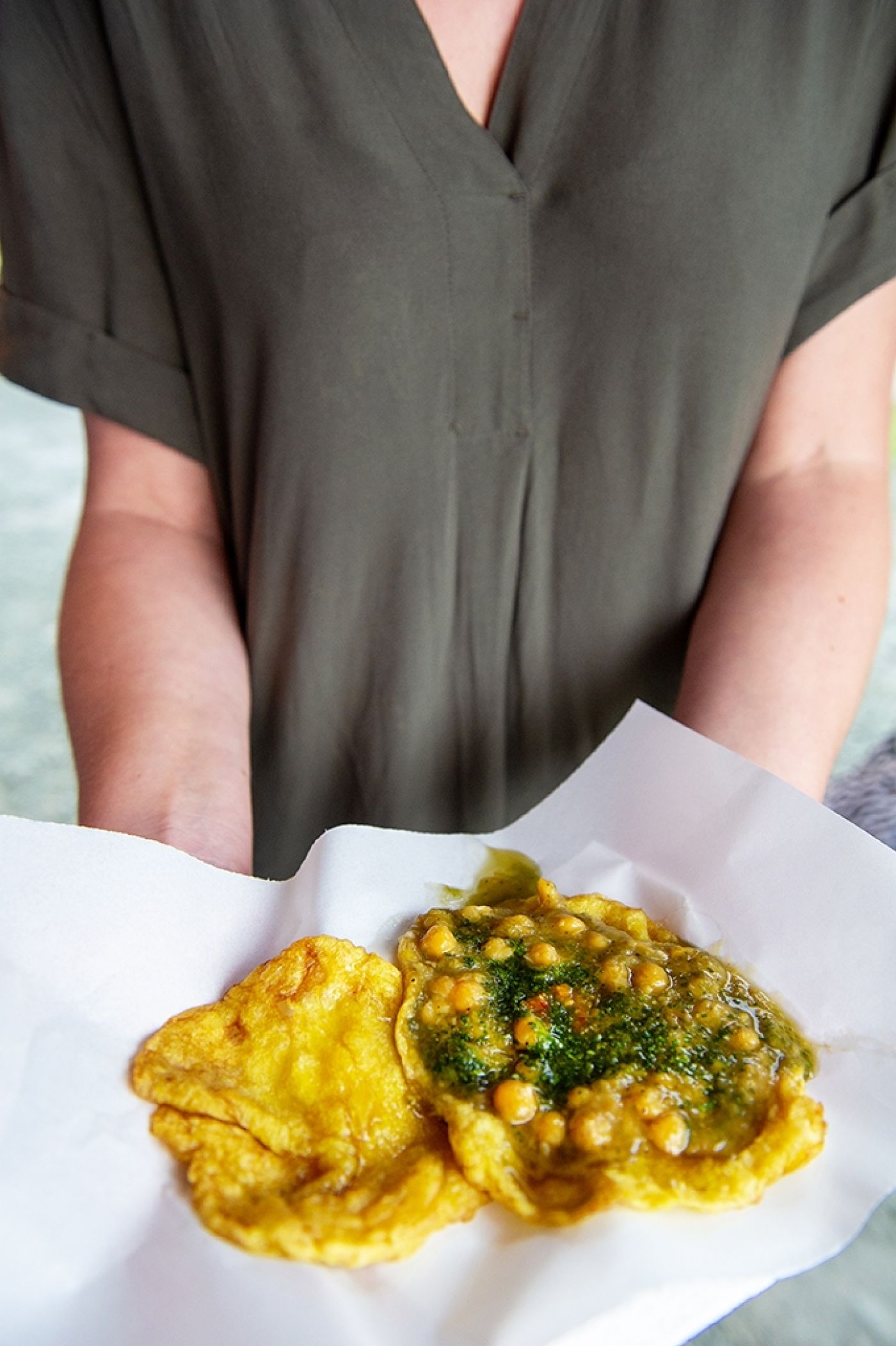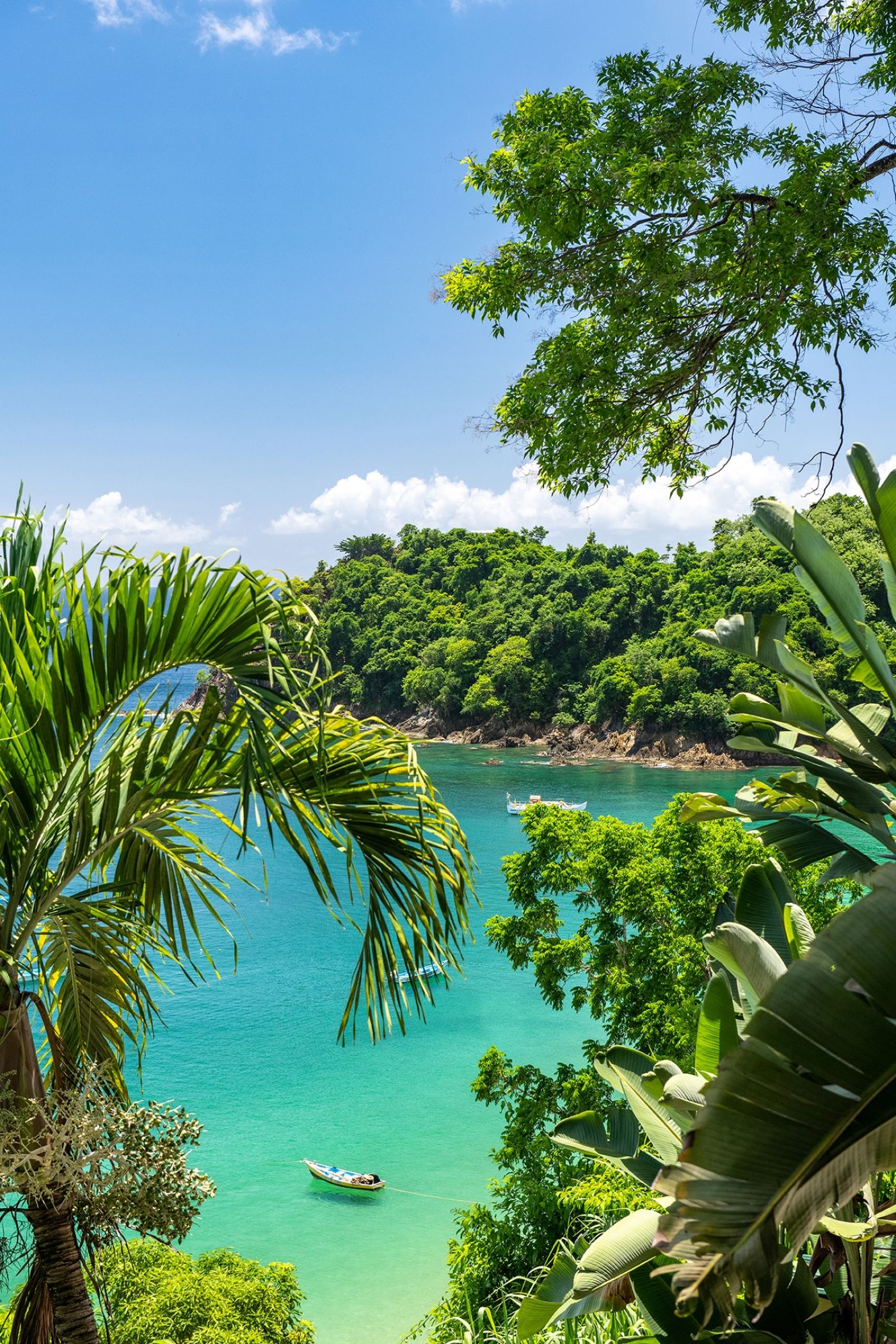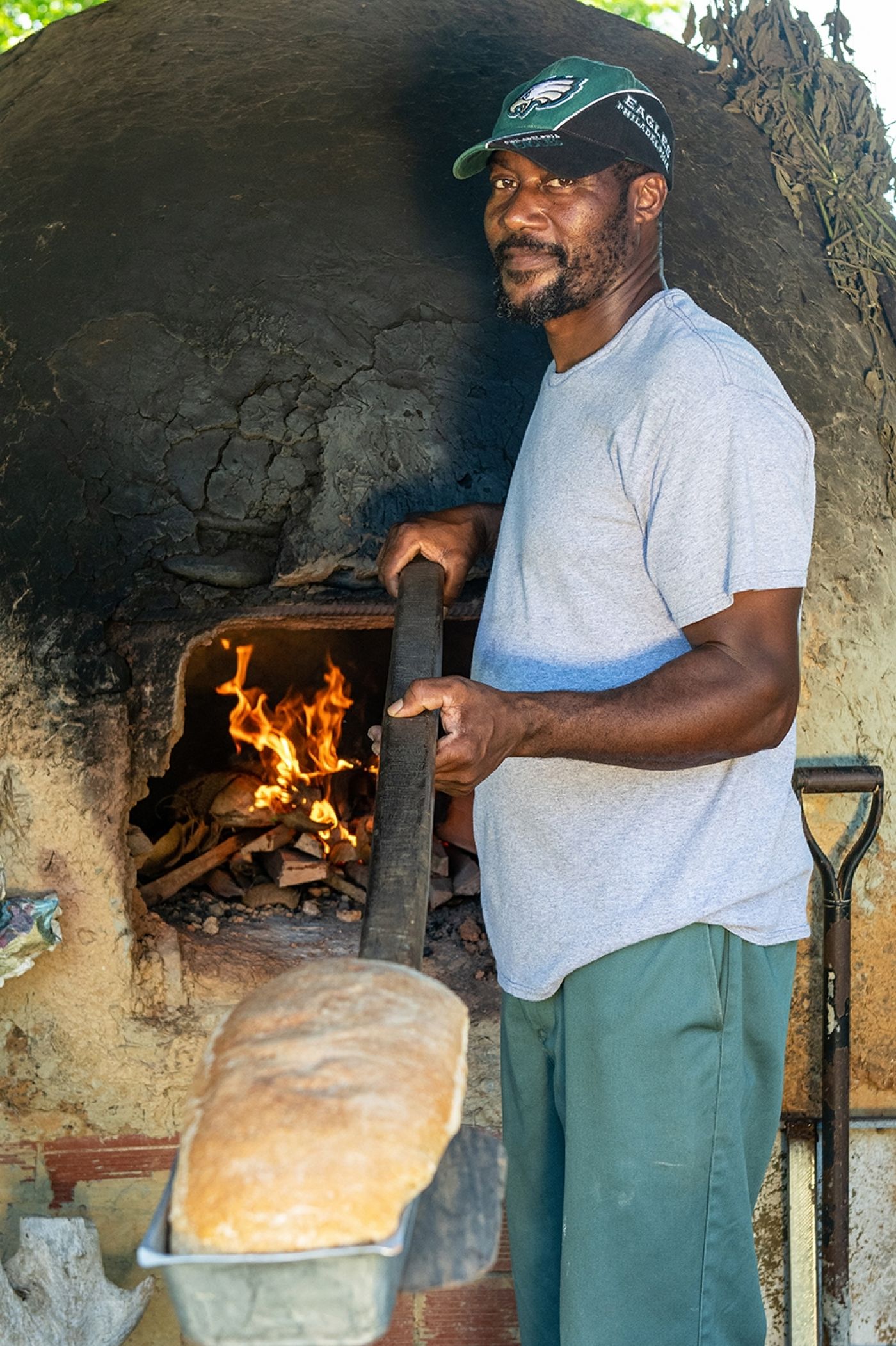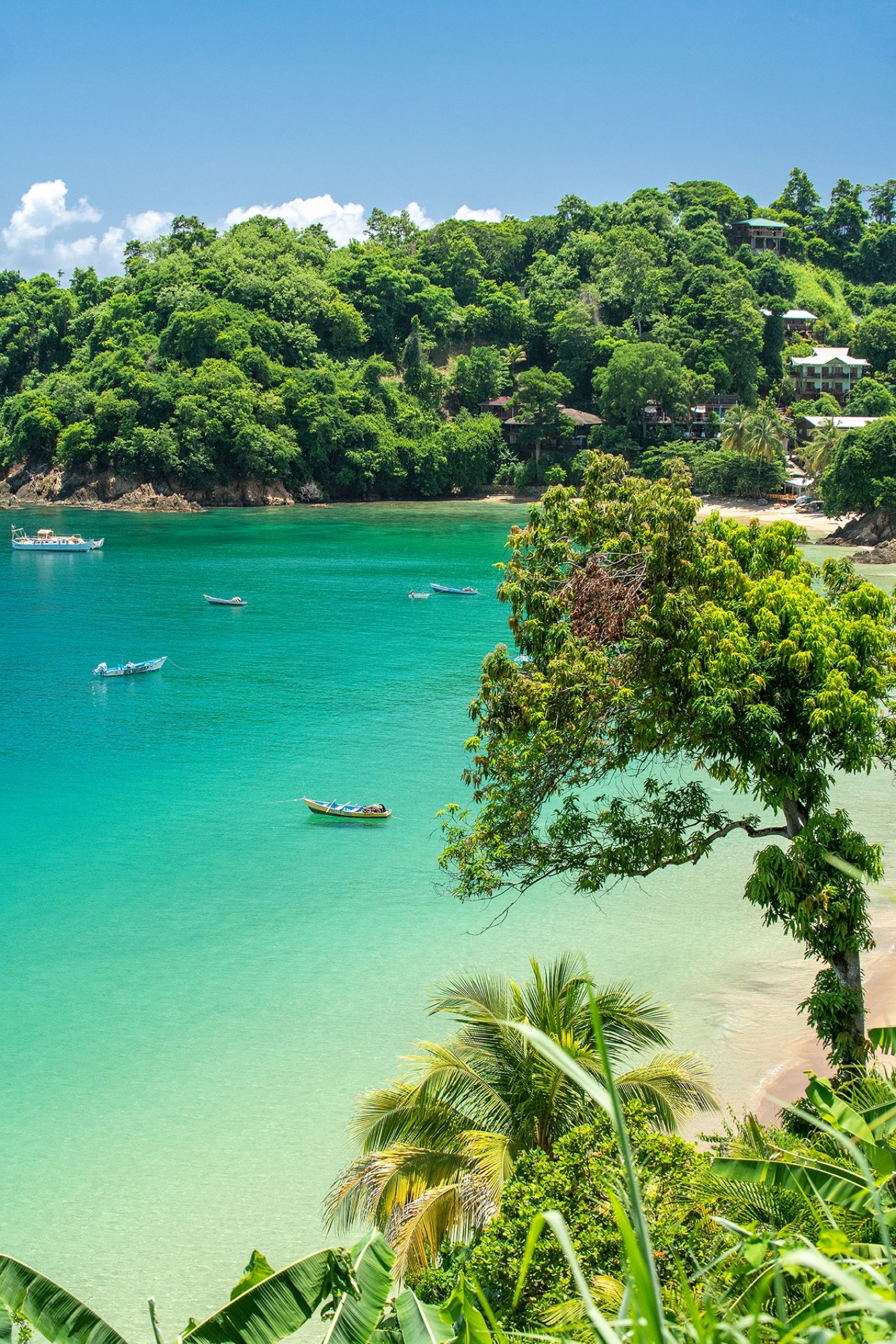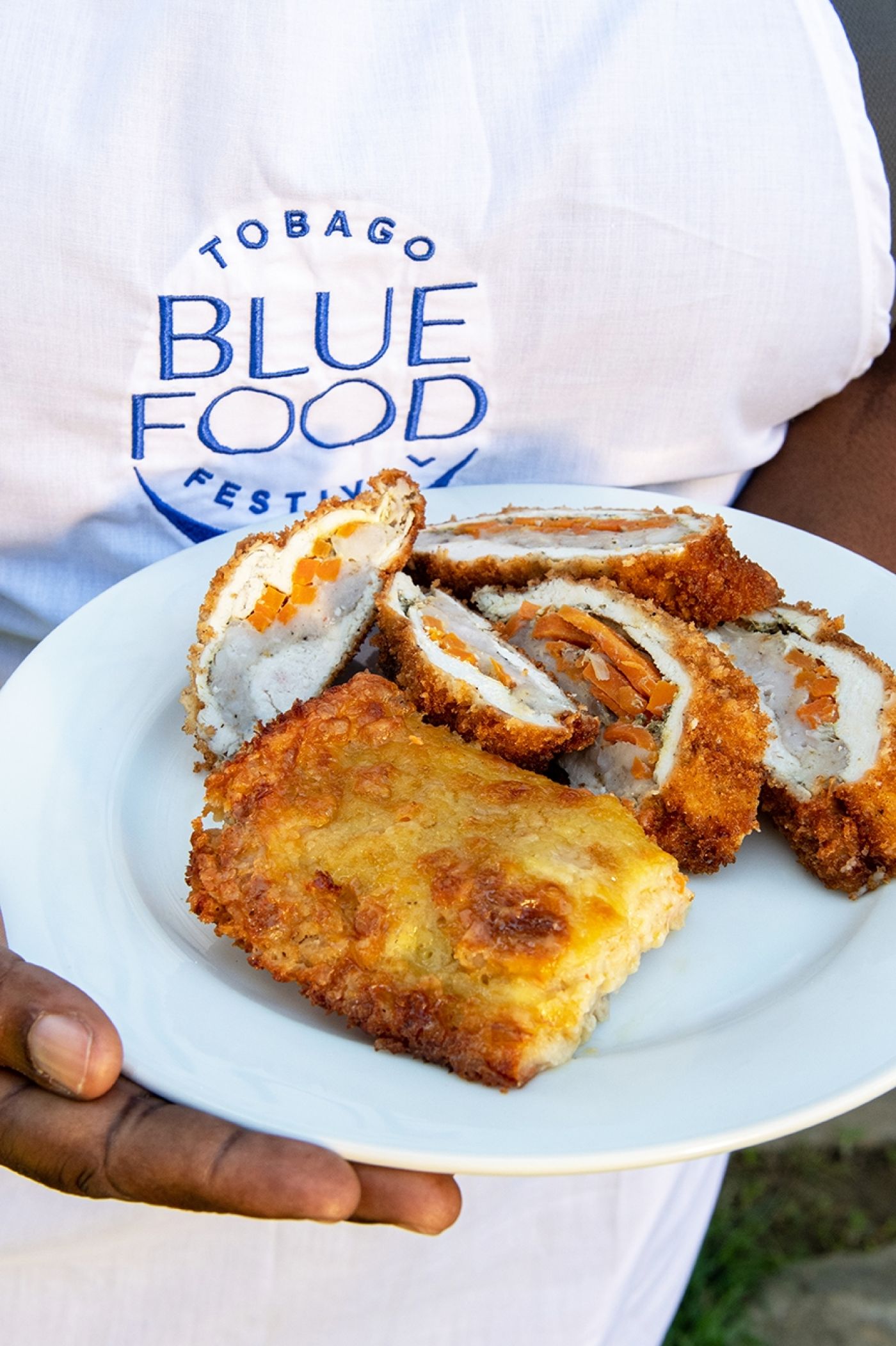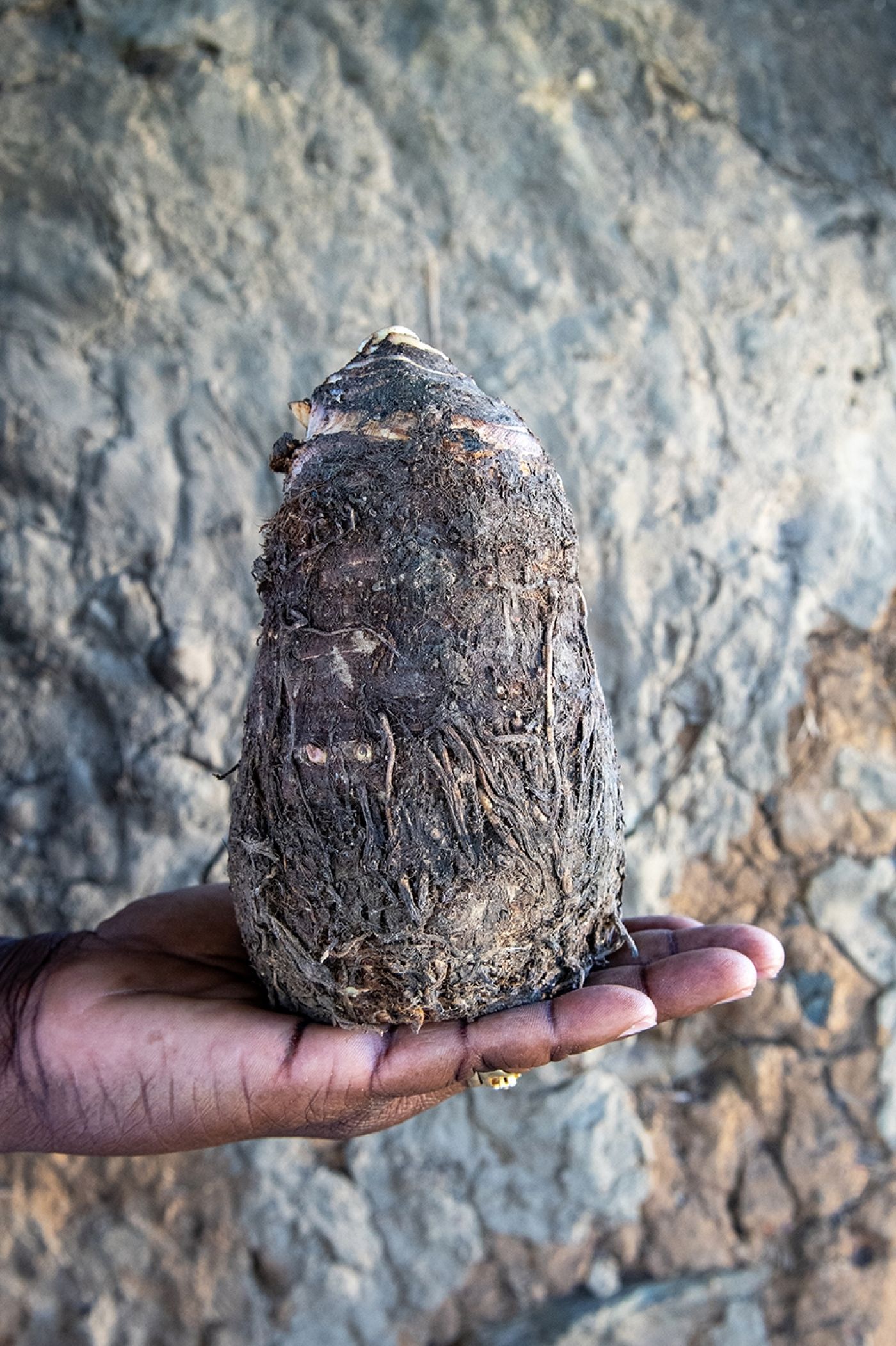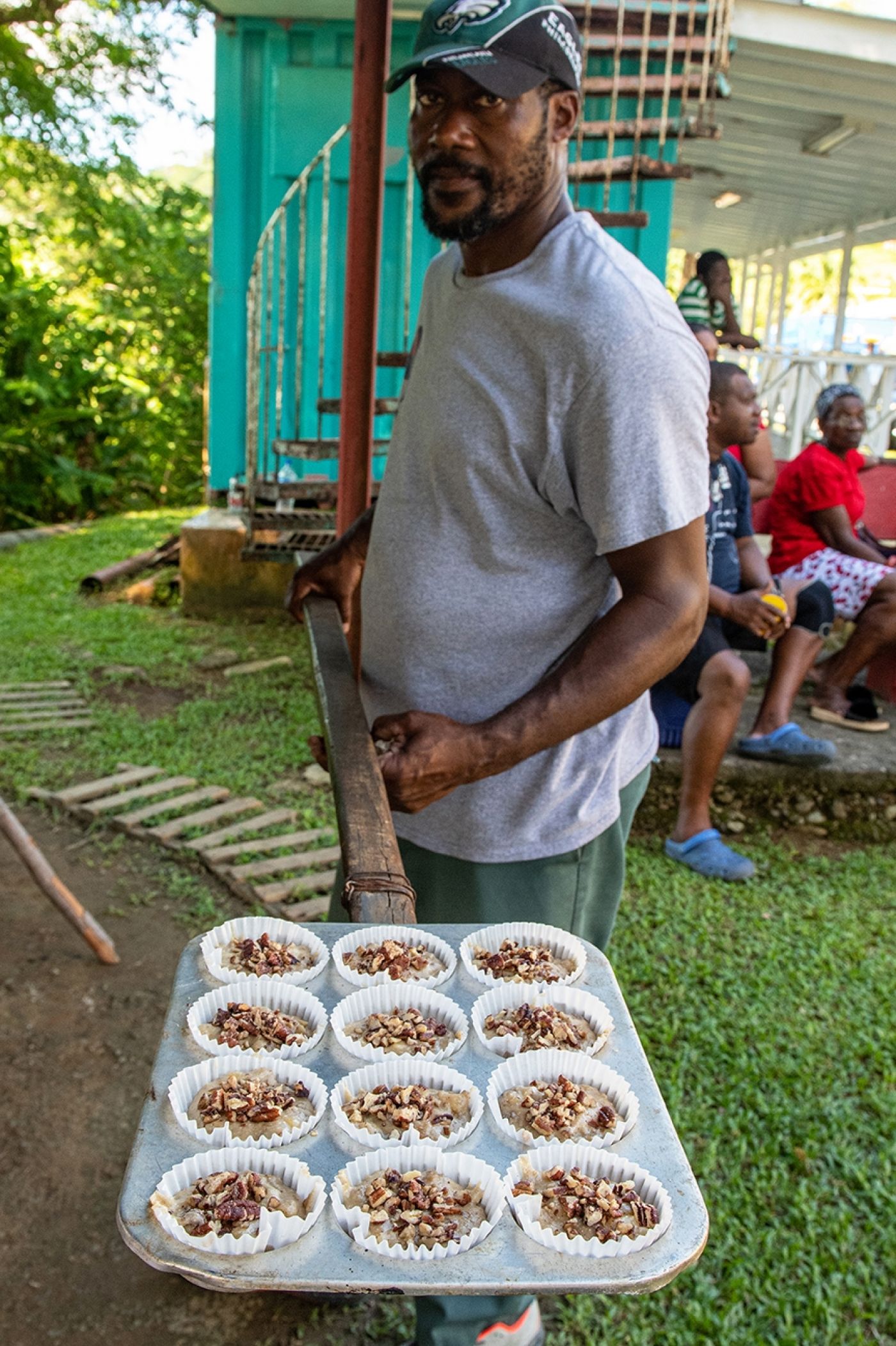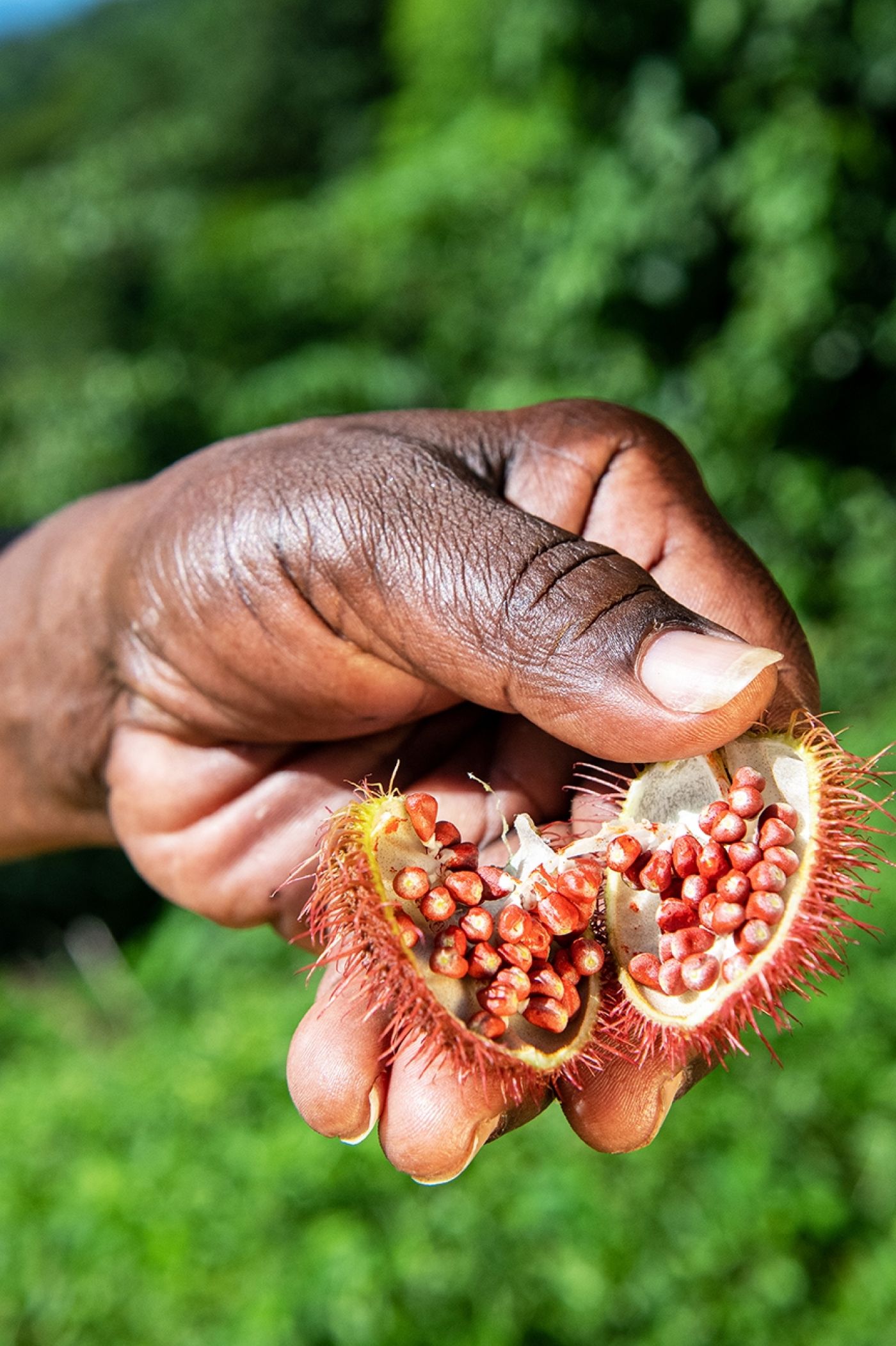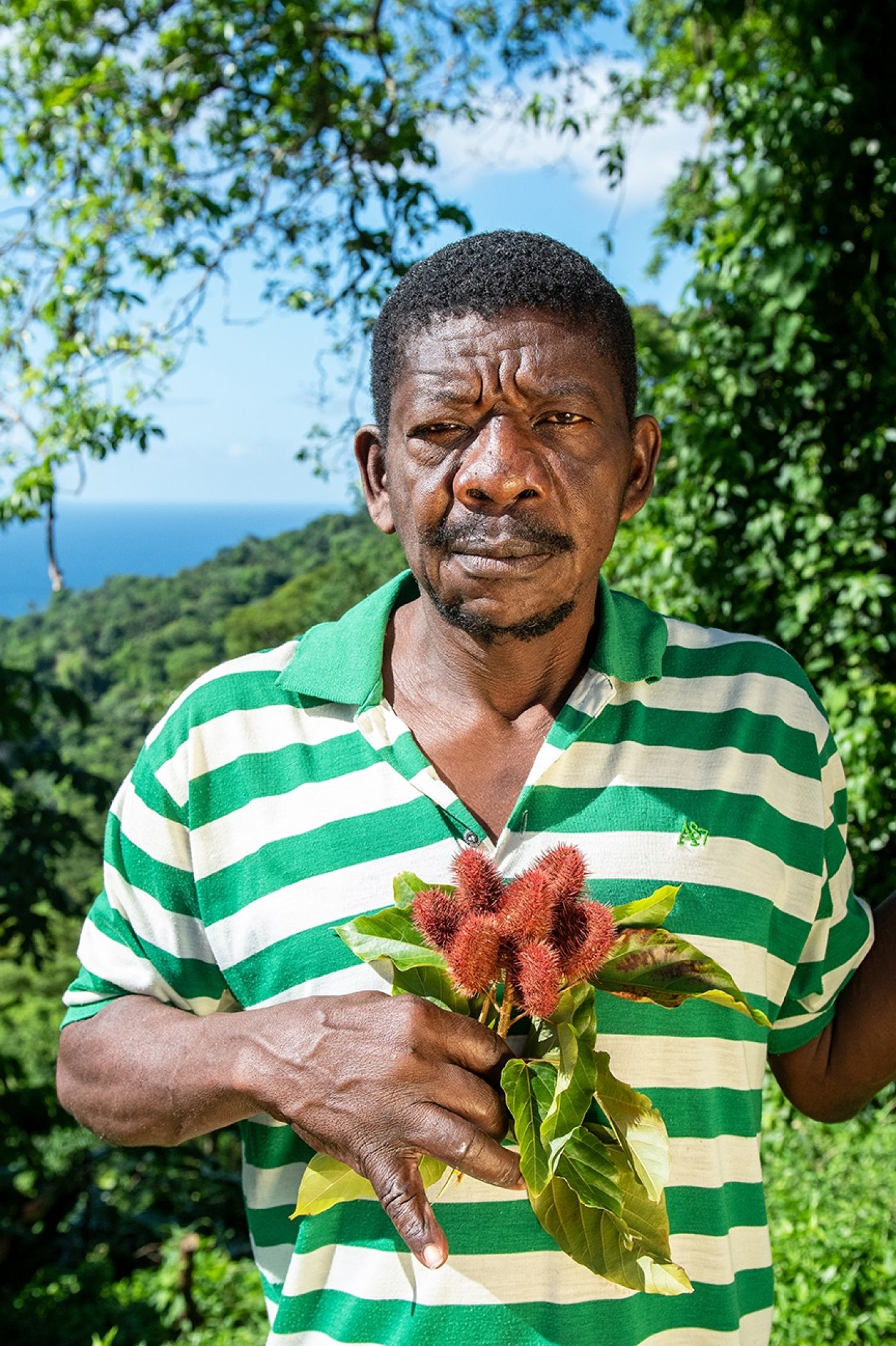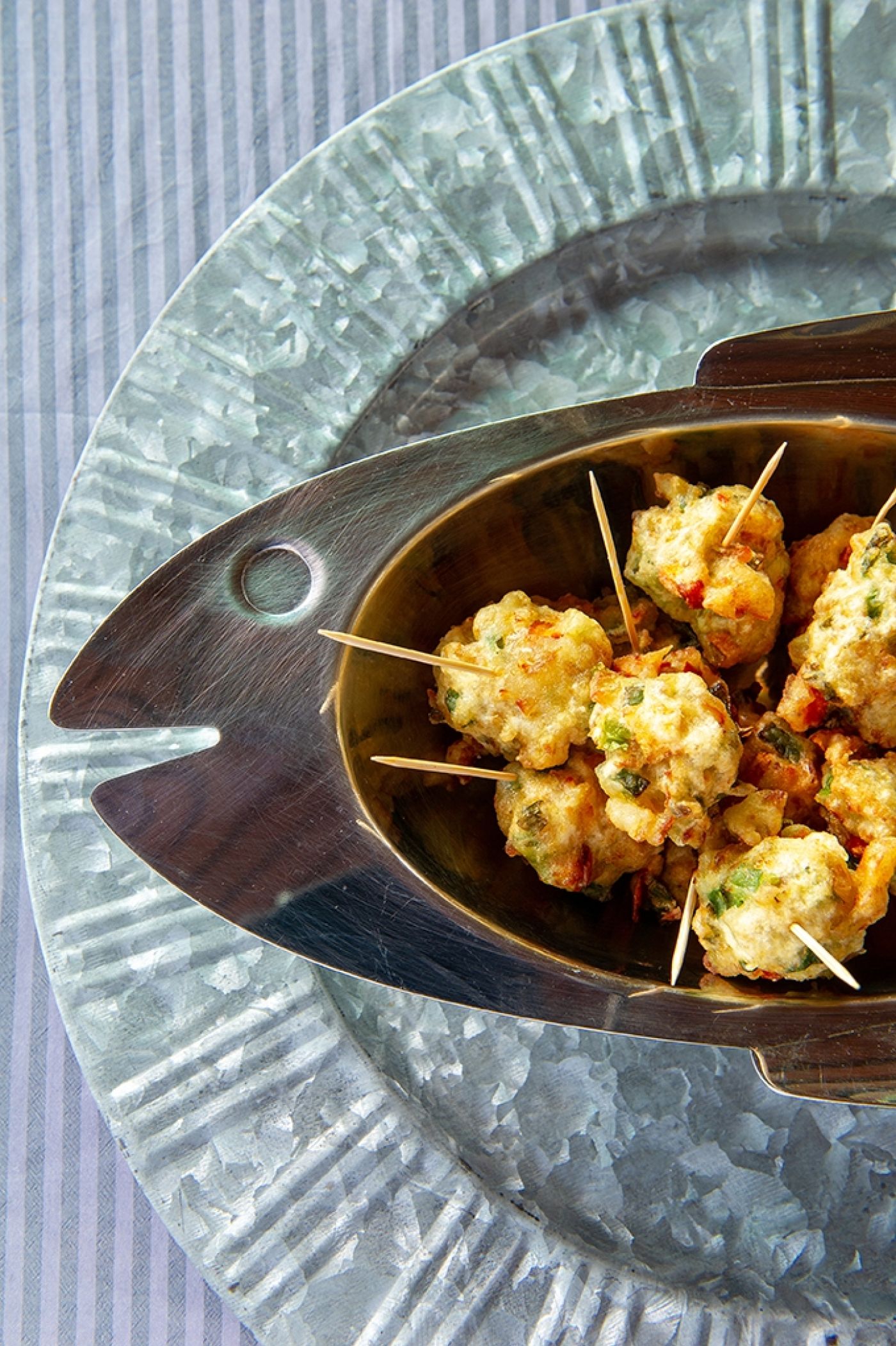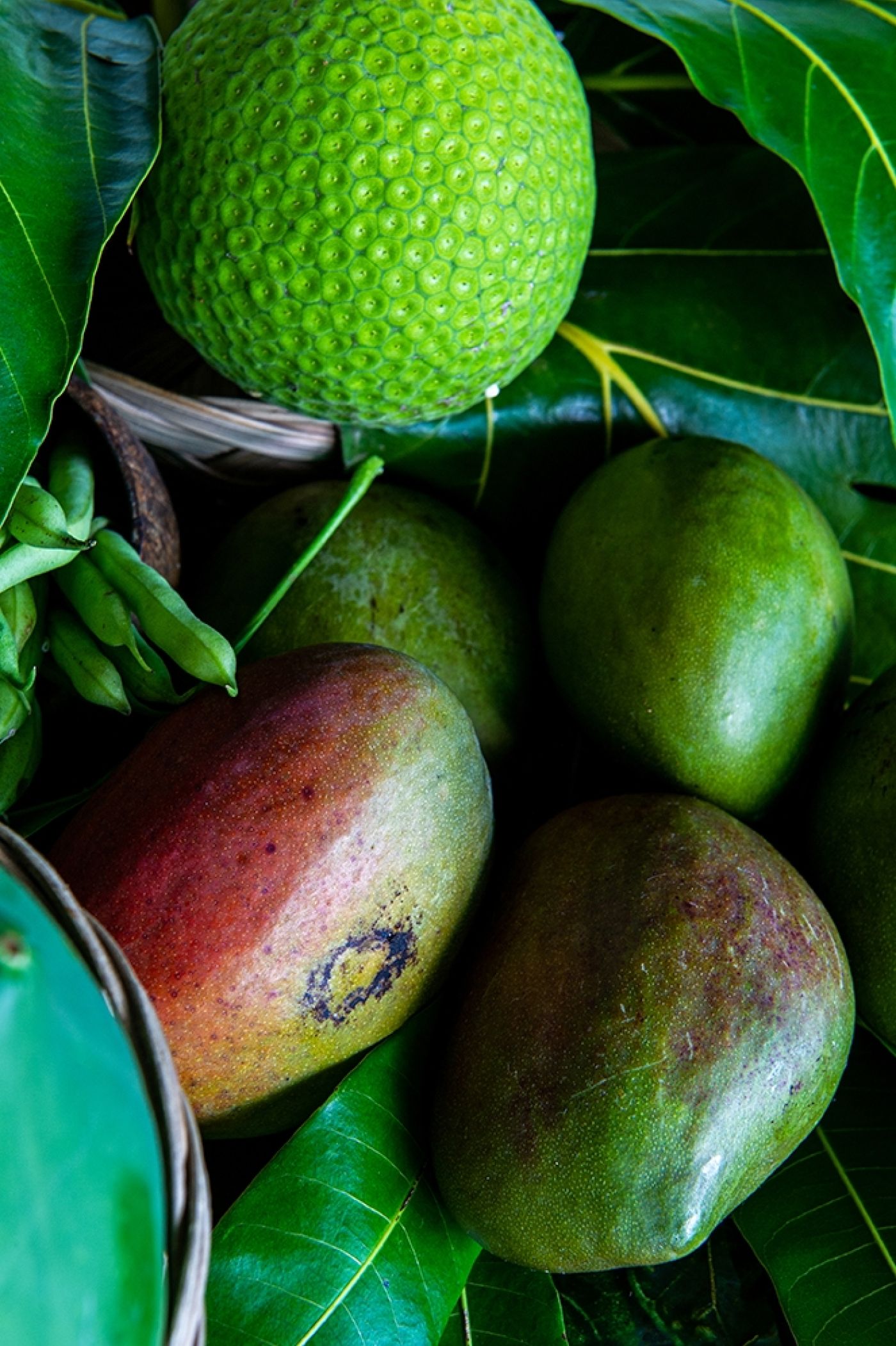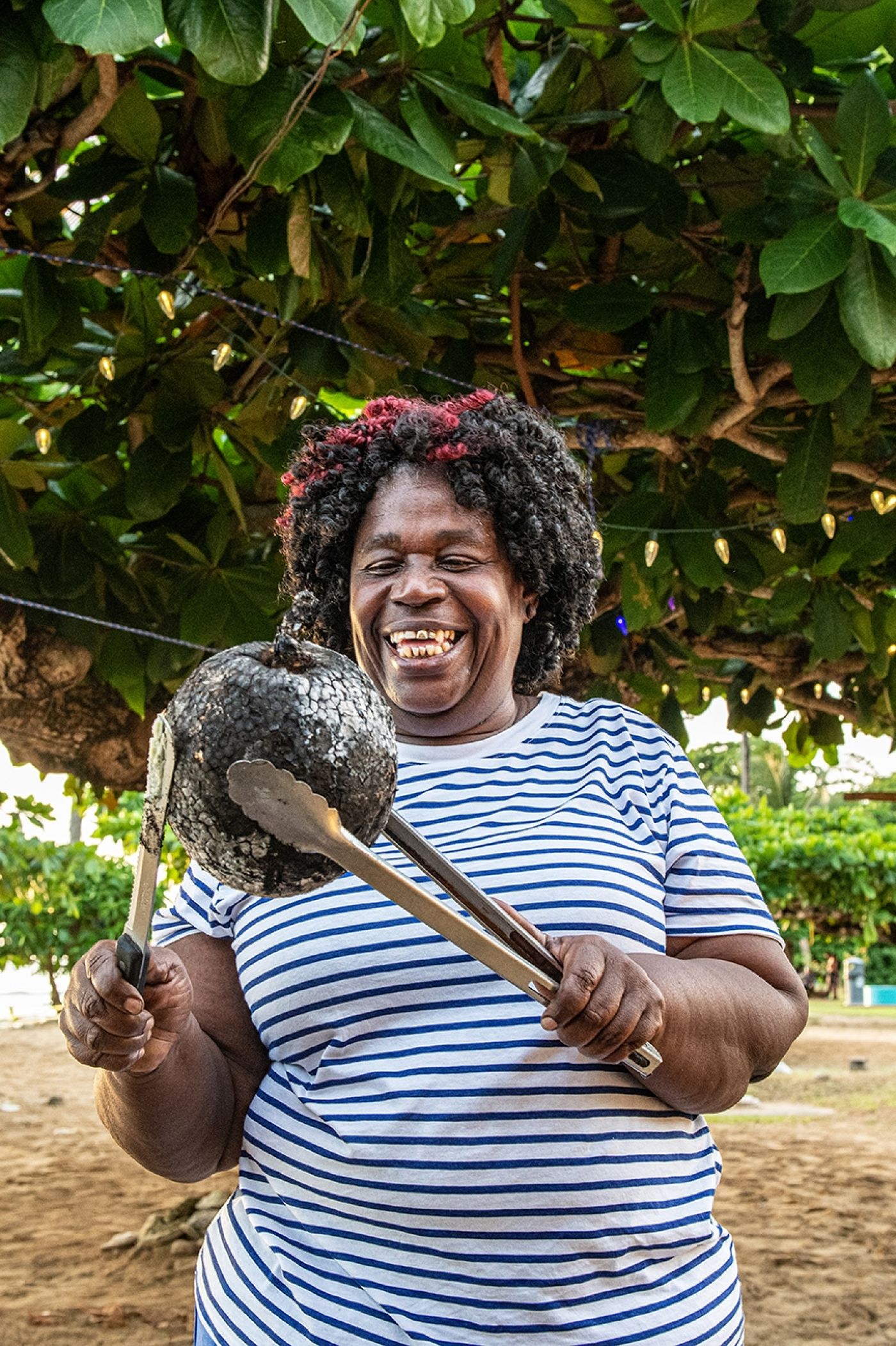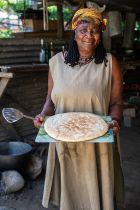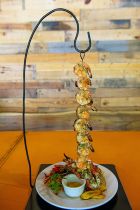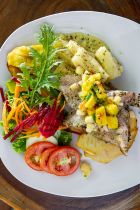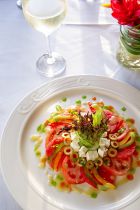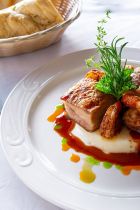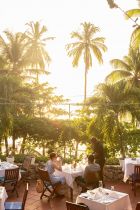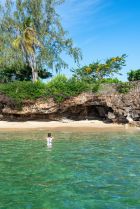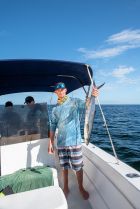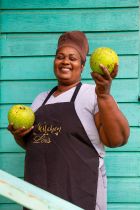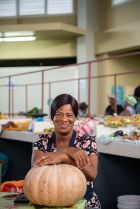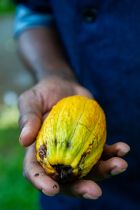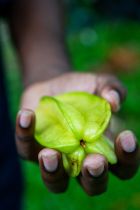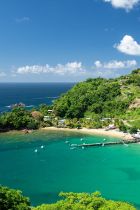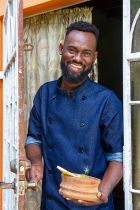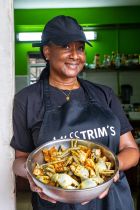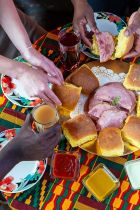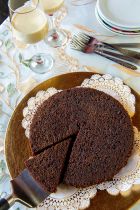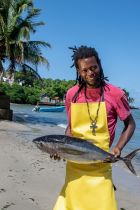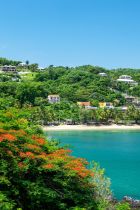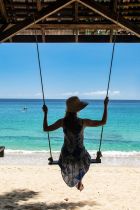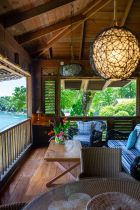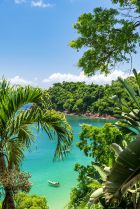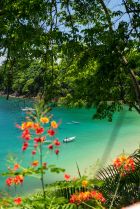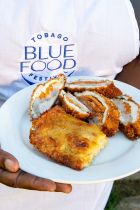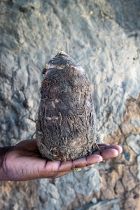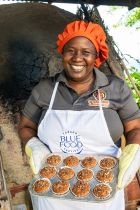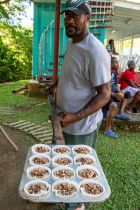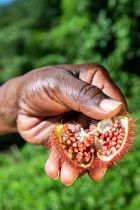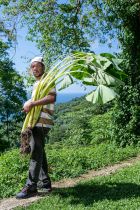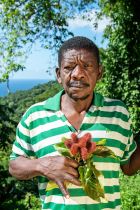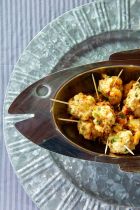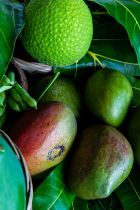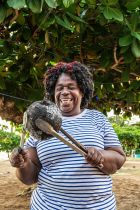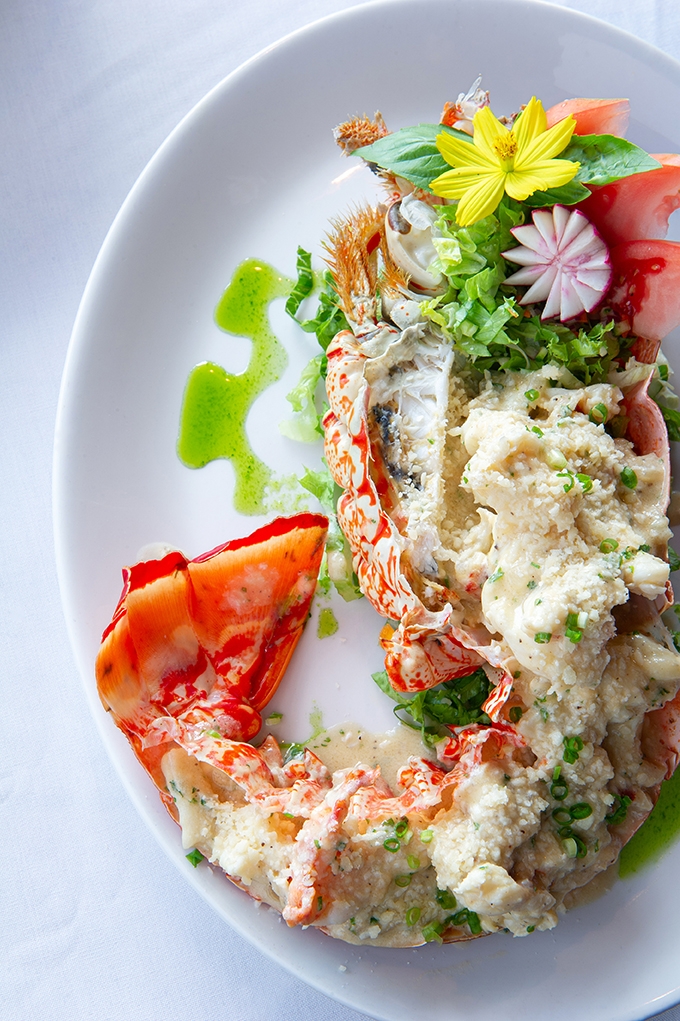
Food and Travel Review
The Caribbean breeze is spice scented. Cloves, ginger and nutmeg combined with caramelised sugar. Drifting from the kitchen of roadside café Frontline Flavours, these aromas immediately stir up associations with Christmas – incongruous as that may seem against the backdrop of palm trees and a blazing sun rapidly melting the ice in your punch.
Chef Danielle Stewart is baking black cake. A wickedly sticky, dense confection of steamed, rum-soaked and macerated fruit, it’s the much-anticipated finale to festive gatherings across Tobago. ‘On this island, people really love to eat, so you can imagine how seriously we take our Christmas food,’ says Danielle. ‘Everyone is very particular about what blend of spices they use, each family with their own recipe going back generations.’ A triumvirate of spiced, seasonal tipples will be free-flowing: tangy, ruby-red sorrel, (made from a red flower – not the green herb common in Britain – and bay); ponche de crème, their rum-spiked spin on eggnog; and fermented ginger beer. And the big day always starts with hops and ham – clove-studded gammons that are traditionally boiled in old biscuit tins, ‘which intensifies the flavour and aroma’, sandwiched into fluffy brioche rolls (lashings of hot pepper sauce: optional). Such dishes are emblematic of Tobago’s broader culinary culture: one that prizes one-pot comfort food, communal cooking and family recipes over haute cuisine or flavour fads, and stars a multicultural mix of spices and ground provisions, borne to these shores on trade winds by Tobago’s varied settlers.
Not far from the coast of Venezuela, Tobago’s often called Trinidad’s ‘little sister’ – resembling an apostrophe to its island- nation sibling when viewed on the map. Yet, despite spanning a mere 116sq km, it’s a produce powerhouse. Bathed in Caribbean sunshine and doused in seasonal rains, practically every inch of the mountainous landscape erupts with lush, green life. Branches hang low with ripe fruit – mango, papaya, breadfruit, five finger (star fruit) and soursop – like baubles dangling from a Christmas tree. Even where jungle gives way to beach, the boughs of sea grape, almond, hog plum and tamarind provide shade over the powdery sand. As local tour guide Phillip Diamond Williams points out, ‘It’s difficult to go hungry in Tobago. At any time, you can just stop in the road and pick some ripe mangoes.’
This abundance goes beyond exotic fruits, though. The unsung island is home to the largest Unesco biosphere reserve in the English-speaking Caribbean, the Main Ridge Forest Reserve. Here, between tumbling waterfalls and crimson-leaved flamboyant trees, you might spot the iridescent emerald plumage of a white-tailed sabrewing or a blue-grey tanager flashing feathers the colour of the Caribbean Sea. Hummingbirds hover beside hibiscus flowers, dipping their needle-like beaks into the pink petals. On summer nights, 450kg leatherback turtles haul themselves on to these beaches to nest; morning beach strolls on Grafton Bay or Great Courland reveal chevron-shaped flipper marks leading to tell-tale mounds of sand, each holding 100 or so eggs.
For centuries, Tobago’s fecundity was exploited by Europeans, who established indigo, tobacco, cotton and sugar plantations, and the island changed hands more than 30 times in 250 years. The Dutch left crumbling remains of coral-stone windmills and, after emancipation, Indian migrants came here to fill labour shortages, making spice-laden street food such as doubles and roti an integral part of local cuisine. The legacy of French and British rule lingers in canon-studded clifftop forts and place names – you can drive from Bon Accord to Belmont via Goodwood, Windsor and Speyside – and the first peoples called the island Tavaco or Tabaco after the Spanish word for tobacco, likening its shape to the far cigars smoked by indigenous inhabitants. It was also the Spaniards who introduced cacao trees and the celebrated Trinitario variety was created here – a hybrid of the flavourful Criollo and hardy Forastero, both from Venezuela. ‘Workers would walk on the beans with their feet to smooth and polish them,’ explains chocolatier Jean Claude Petit, ‘and, well, if you know anything about the Caribbean, we like music and we like to move, so the ritual became known as “dancing the cocoa”.’
By the 1800s, Trinidad and Tobago had become the world’s third- largest producer of cocoa, sought by Europe’s most prestigious confectioners. ‘Today it’s less than one per cent,’ laments Jean-Paul, ‘since the economy shifted to petroleum in the Fifties, which is tragic because we grow the world’s best cocoa. It’s a very delicately flavoured cocoa with no bitterness.’
Aiming to revive the industry and get more Tobagonians to enjoy their homegrown hybrid, Jean Claude established the island’s first bean-to-bar company, Tobago Chocolate Delights, in 2014. ‘The best chocolate manufacturers in Europe tell you they use Trinitario, but it might make up just one or two per cent of the bar, whereas here we use 100 per cent,’ he points out. At his tiny workshop in Scarborough’s environs, Jean Claude roasts, grinds and ferments the beans in-house, with the whole process taking around 30 hours.
Tempered to a glossy shine and set in moulds, the chocolates lining the counter feature all-natural, seasonal flavours, from guava jelly and rum cream to hot pepper or tonka bean. The most traditional way for islanders to consume their cocoa is in liquid form, though. To sample a cup, we leave Tobago’s more developed south-west corner behind and follow winding lanes inland to reach the village of Les Coteaux, a name that aptly means ‘the hills’.
Coconut-scented woodsmoke beckons the visitor into the front yard of Prince and Monica Williams’ home. Cacoa trees border the cottage, sprouting tiny, white star-shaped flowers. Crack open the pods and you’ll find a mixture of milky pulp and seeds. The latter gets scraped out, roasted, shelled and finally rolled into a palm- sized ball – like the one Monica is grating into a pot of simmering water. She stirs in a handful of crushed bay leaves and lemongrass from the garden, followed by condensed milk. Over another open fire, Prince tends to a classic Caribbean cooked breakfast. Flaked saltfish sizzles in a pan alongside onion, sweet peppers and tomatoes; the crust of coconut bake (flatbread) turns golden brown. Together, these recipes form the perfect combination of sweetness and saltiness with a hint of spice and citrus.
Besides running cookery workshops, the Williams and their 13 children are essentially Tobago’s answer to the von Trapp family, performing together in the island’s annual Heritage Festival (July- August). While visitors slurp down the chocolate tea from enamel camping mugs and scoop up the fish with the bread, Prince settles down with a homemade goatskin tambrin and plays a series of folk songs, pausing to explain how the instrument was invented. ‘Back in the day, slaves saw drumming as a telephone to their ancestors, a way to secretly communicate,’ he says. ‘The masters didn’t like this and tried to put a stop to it, so people cut down the drums and hid them under their clothes.’ Percussion as a form of resistance similarly inspired the island’s iconic steel pan bands, cobbling together drums from scrap metal and oil barrels. It seems that music, like food, can’t be separated from the island’s colourful past.
Many staple Tobagonian dishes arose from the resourcefulness of the population, points out private chef Arthur Patrick. ‘There’s a lot of communal cooking, one-pot dishes and stews. People had to forage to supplement the provisions they were given.’ A case in point would be crab and dumplings, Tobago’s national dish. Freshwater blue crabs were easy to pick from the island’s swamps and simmered in coconut milk alongside wild-growing spices, with cornmeal dumplings to bulk out the dish.
Another foodstuff bound up in this chapter of Tobago’s history is dasheen (taro), a tuber that arrived aboard transatlantic ships and sustained islanders for centuries. Its spinach-like leaves are sautéed to make callaloo, while the root provides a nutrient-rich, starchy staple when boiled. But perhaps nobody has been so inventive with it as Yzanne Williams-Chance, author of a cookbook featuring some 60 dasheen recipes, and owner of Calypso Girl Experience, a company producing dasheen-based wines, condiments and cakes. Travelling to meet the ‘Dasheen Queen’ in the home of blue food (so-called because dasheen takes
on a blueish hue when cooked), L’Anse Fourmi Bloody Bay, on Tobago’s wilder northern shore, means following the coast road – all corkscrew bends and sudden reveals of picture-perfect bays: Castara, Englishman’s, Parlatuvier. On these powdery sands, you’re likely to find a stand selling bags of sweets such as coconut milk fudge, cumin-marinated mango, lime balls and crunchy sesame benesticks, while a handful of fishing boats and intrepid snorkellers bob in the turquoise shallows. It’s easy to see why Tobago was used as the filming location for 1960’s Swiss Family Robinson.
L’Anse Fourmi’s dramatic cliffside location means the village’s outdoor wood-fired oven also comes with sea views. ‘Dasheen is incredibly versatile,’ enthuses Yzanne, as she sifts dasheen flour into a batter for banana muffins. ‘Anything that potato can make, dasheen can do. In baking, it adds a subtly nutty flavour, plus it’s gluten free.’ Were there any dasheen recipe experiments that didn’t work? Yzanne shakes her head, laughing. ‘From cheesecakes to ice cream, you name it, we’ve made it.’ To prove her point, she produces a dish of dasheen-stuffed breaded chicken breasts, a jar of pickled dasheen spiced with amchar masala, even a bracingly strong punch.
Such is enthusiasm for the humble tuber that an entire event is dedicated to it. Running since 1998, October’s Blue Food Festival now attracts a 2,000-strong crowd to nearby Bloody Bay and even has an offshoot in New York. Along with Christmas and the monthly Harvest Festivals, it’s one of the highlights of the island’s culinary calendar – yet another example of Tobagonians’ talent for creativity, cooking up a storm and making merry.
Estella Shardlow and Marina Spironetti travelled courtesy of Tobago Tourism Agency. tobagobeyond.com
Where to stay
Castara Retreats With rainforest above and ocean below, this sustainable star on the island’s unspoilt north-west takes its design cues from Japanese haiku houses. Each of the cedar- and cypress-wood lodges has an indoor- outdoor lounge, ocean panoramas, kitchenette and upcycled rattan furniture. Wellness is another draw to the family-run retreat, from daily drop-in yoga classes to massage treatments. Doubles from £139 (3 nights minimum). North Side Road, Castara, 07908 978 477, castararetreats.com
Half Moon Blue Hotel With a former fashion model at the helm, there are few clues to the 19th-century building’s former life as a donkey stable – these days, the infinity pool, chaises longues and four-poster beds bring an altogether chicer aesthetic. Occupying a serene hillside spot close to Fort King George, this boutique bolthole is home to just eight suites, plus a spectacular penthouse loft. Doubles from £163 including breakfast. 73 Bacolet Street, Scarborough, 00 1 868 639 3551, halfmoonblue.com
Magdalena Grand Beach & Golf Resort Inside the grounds of this coconut plantation turned luxury oceanfront hotel on Tobago’s south-west tip you’ll find an 18-hole golf course, nature trails and mangrove forest as well as eight on-site restaurants. Rooms take traditional island style – all zesty lime and turquoise hues and dark wood – while suites come with private hot tubs. Doubles from £200 including breakfast. Tobago Plantations Estate, Lowlands, 00 1 868 660 8500, magdalenagrand.com
Plantation Beach Villas These spacious candyfloss-coloured villas with shared outdoor pool are just steps away from Stonehaven Bay, one of the south coast’s loveliest beaches and a seasonal turtle nesting site. The veranda views from the three-bedroom pads are hard to beat and hummingbirds frequent the landscaped gardens. Villas from £403 (sleeping 6, 3 nights minimum). Stonehaven Bay Road, Black Rock,
00 1 868 639 9377, plantationbeachvillas.com
Travel Information
Sitting off the coast of Venezuela, the unspoilt island of Tobago – Trinidad’s smaller sister – is the original castaway destination. Currency is the TT (Trinidad and Tobago) dollar and time is four hours behind GMT. Flight time from London to ANR Robinson International Airport, Tobago, is around 10 hours and 20 minutes.
GETTING THERE
British Airways offer weekly flights from London Gatwick with one stop in St Lucia. BA also fly from London Gatwick to Trinidad three times a week, from where passengers can take a Caribbean Airlines domestic flight to Tobago. britishairways.com carribbeanairlines.com
RESOURCES
Tobago Tourism Agency Limited (TTAL) is the national tourism
board and your official guide to the island. Its website is full of inspiration and information to help you plan your trip. tobagobeyond.com
Where to eat
Prices are per person for a three-course meal, excluding drinks,
unless otherwise stated
Anchor Bar & Grill A lively oceanfront spot for casual, toes-in-the-sand dining and rum cocktails. Don’t miss the Monday night Pan and Roast event, which stages a live steel pan band and traditional barbecue stall, cooking breadfruit and catch of the day over hot coals. Mains from £9. Shirvan Road, Mount Irvine, 00 1 868 660 5687
Blue Crab Restaurant Charismatic octogenarian couple Alison and Kenneth provide the warmest hospitality and a menu that deftly updates classic Tobagonian recipes. Crab and dumplings, for instance, is reimagined as delicate pasta parcels filled with crab meat and resting in a silky curried sauce, while breadfruit is made into a remoulade for a lighter side dish. Leave room for the decadent banana-chocolate bread and butter pudding. From £23. 5 Robinson Street, Scarborough, 00 1 868 639 2737, tobagobluecrab.com
Frontline Flavours From cooked breakfasts to hearty curries, soups and stews, expect an epic buffet spread of Creole cuisine at this roadside café. And far from being an afterthought, sides like twice-baked potatoes, macaroni pie and breadfruit salad are something to write home about. Lunch dishes from £7.70. 83 Black Rock Main Road, 00 1 868 784 5557
La Tartaruga Head to the fishing village of Buccoo for classic Italian
fare, including freshly made pasta and home-cured fish carpaccio and prosciutto. An impressive wine cellar and effusive Milanese owner make for a memorable evening. From £35. Auchenskeoch Buccoo Main Road, Buccoo, 00 1 868 277 7016, latartarugatobago.com
Miss Trim’s You can’t visit Tobago without sampling crab and dumplings and this hole-in-the-wall kiosk is hailed as the place for one of the island’s tastiest versions. Since the original Miss Trim, 88-year-old Greta, retired, daughter Misha whips up the aromatic, subtly spiced family recipe to a legion of local fans. Curried goat and conch, oxtail stew and roti are also chalked up on the lunch menu. Devour at nearby picnic tables, with plenty of napkins. Crab and dumplings £8.90. Store Bay Beach Facility, Crown Point, Scarborough, 00 1 868 715 6577
Raychard’s A lunchtime takeaway spot for hearty portions of traditional island dishes, like coconut milk stew oil-down, crab and dumplings, callaloo and macaroni pie. Chef Shannon Skeete is keen to celebrate local produce, with trees in the restaurant’s back yard providing breadfruit, mangoes and more. Mains from £12. Golden Groove Road, Golden Groove, Buccoo, 00 1 868 660 5117
The Seahorse Inn With its sweeping terrace, crisp white tablecloths and
a soundtrack of lapping waves, this is one of Tobago’s most elegant, atmospheric dining destinations. International fare like lobster thermidor meets island recipes raised to lofty heights – highlights include a velvety emerald-green callaloo soup, Creole crab cakes and blackened swordfish. From £35. Old Grafton Beach Road, Black Rock, 00 1 868 639 0686, seahorserestaurantandbar.godaddysites.com
Z’s Grill Shack Lionfish, lobster, jumbo shrimp, steak – all are served sizzling and well-seasoned, alongside seasonal fruit salsas or garlic butter, colourful salads and fried plantain. The setting is a breezy, bohemian deck hung with local artworks. Mains from £15. Pleasant Prospect, Black Rock, 001 868 371 5646
Zib’s Homemade Ice Cream Seasonal, local fruits make for an unusual line-up of flavours at this seafront ice-cream shop – how about a scoop of guava pine, bay leaf, jackfruit or soursop? The bestseller is red mango, islanders’ favourite childhood snack. Single scoop £1.40. Store Bay Beach Facility, Crown Point, Scarborough, 00 1 868 270 0663
Food Glossary
Get Premium access to all the latest content online
Subscribe and view full print editions online... Subscribe

